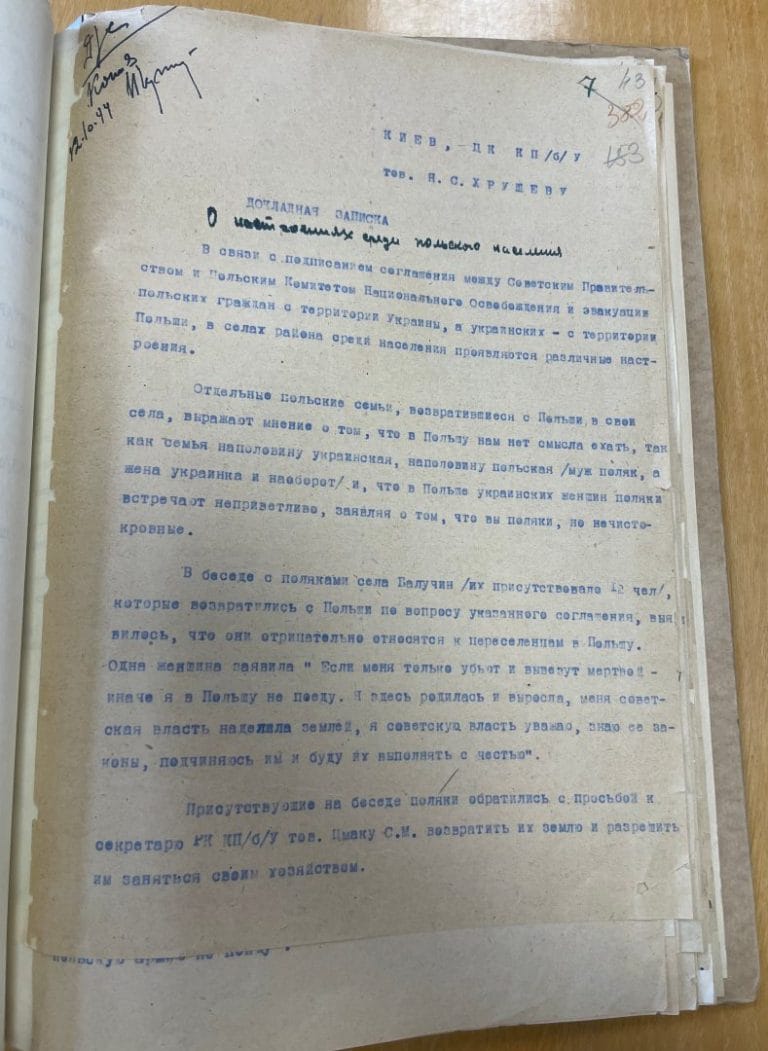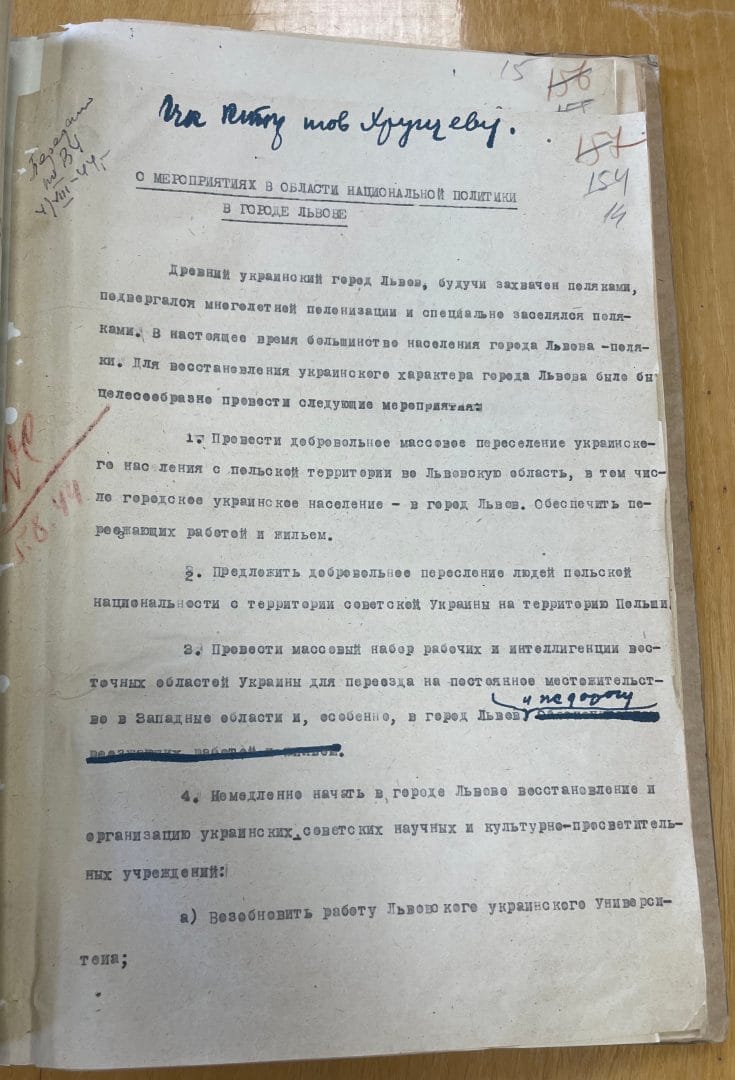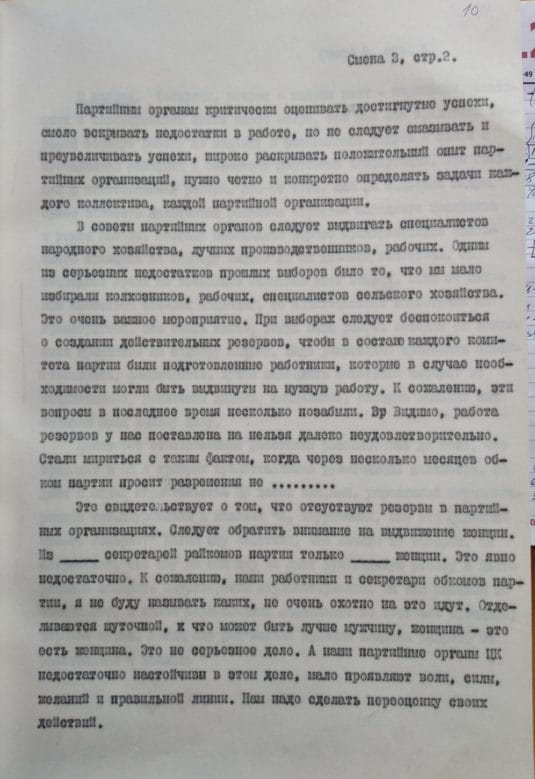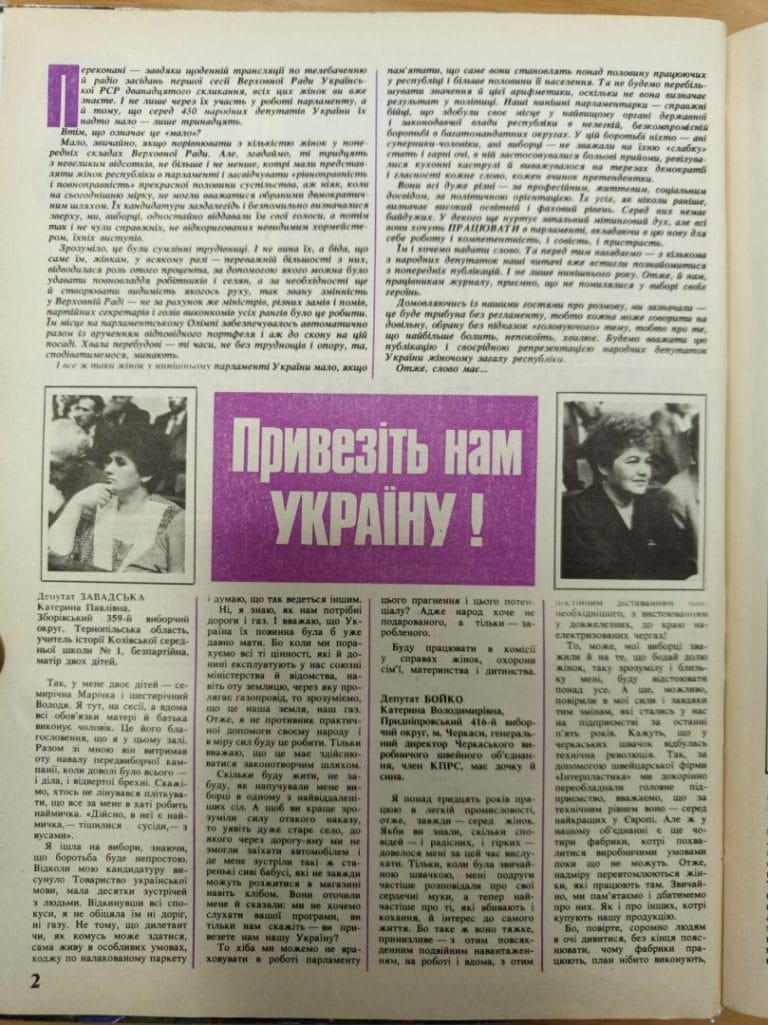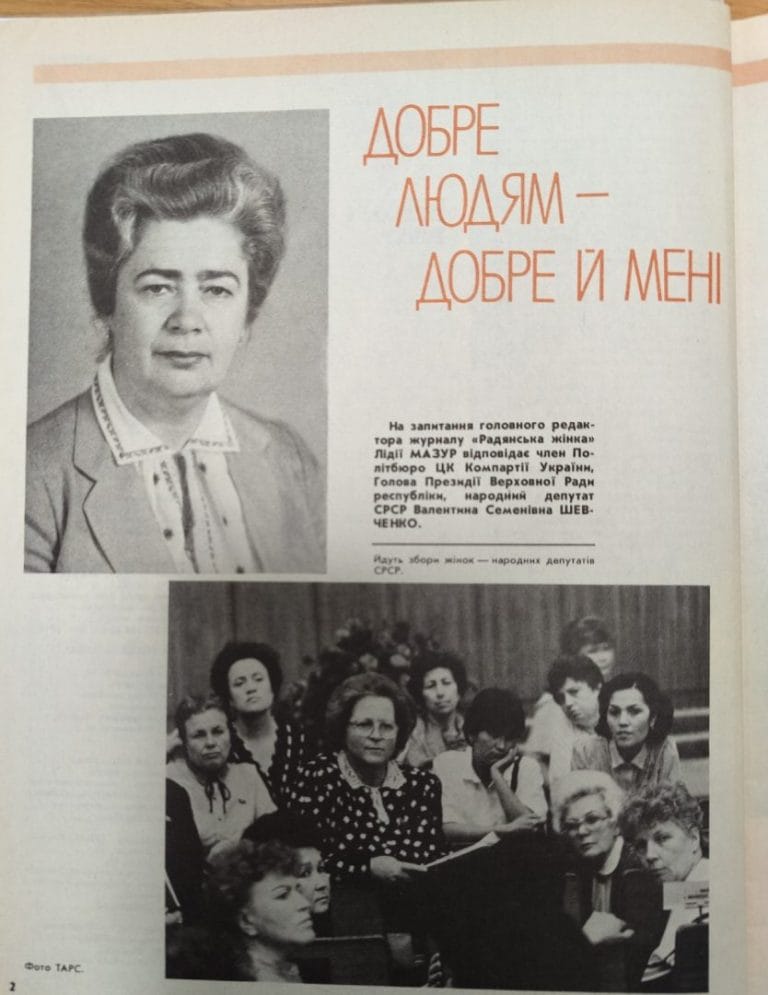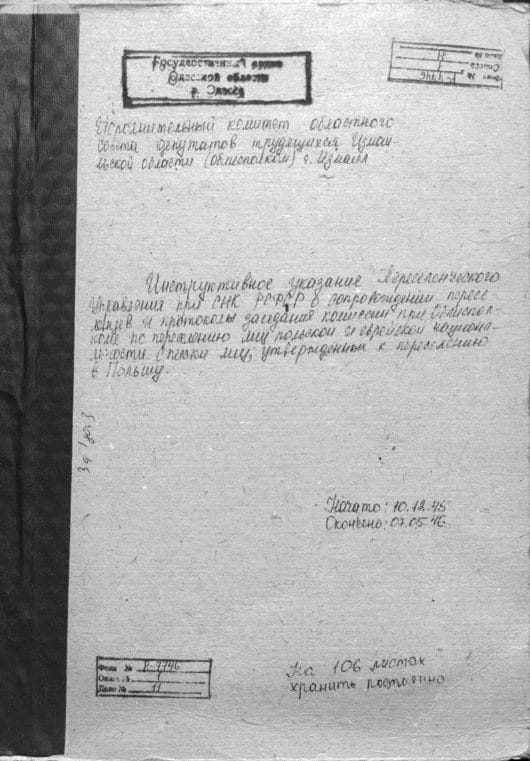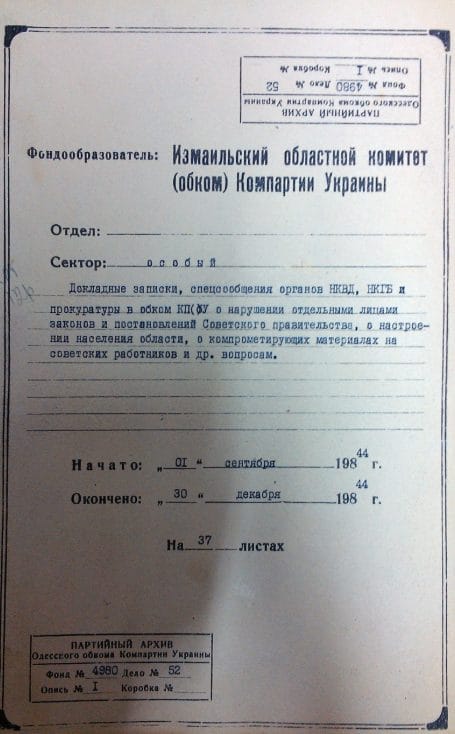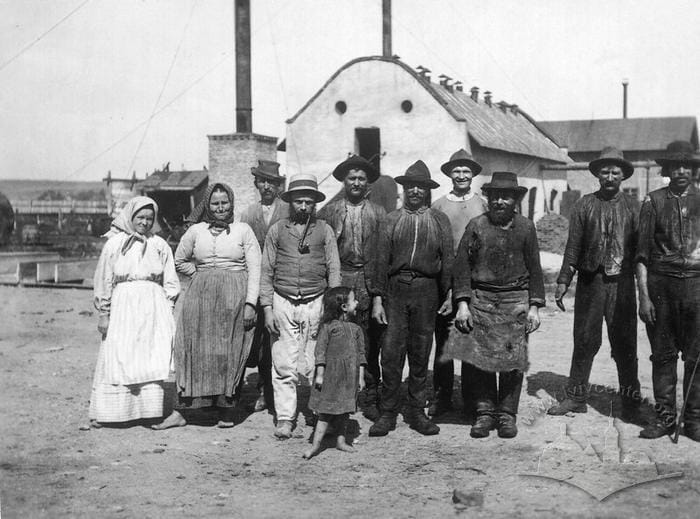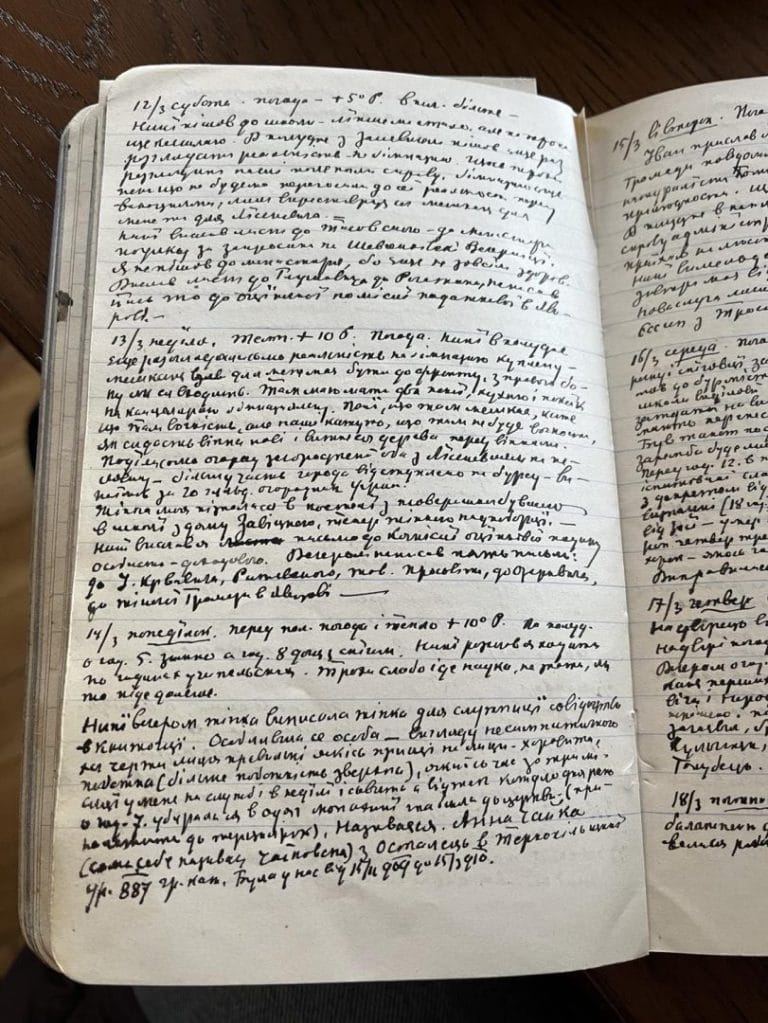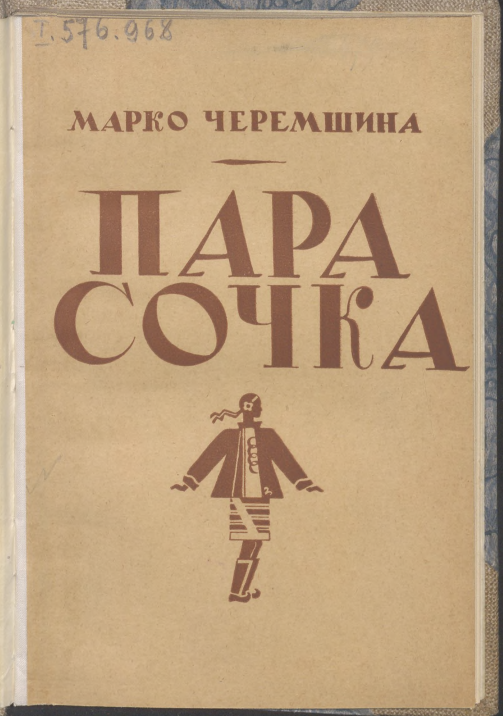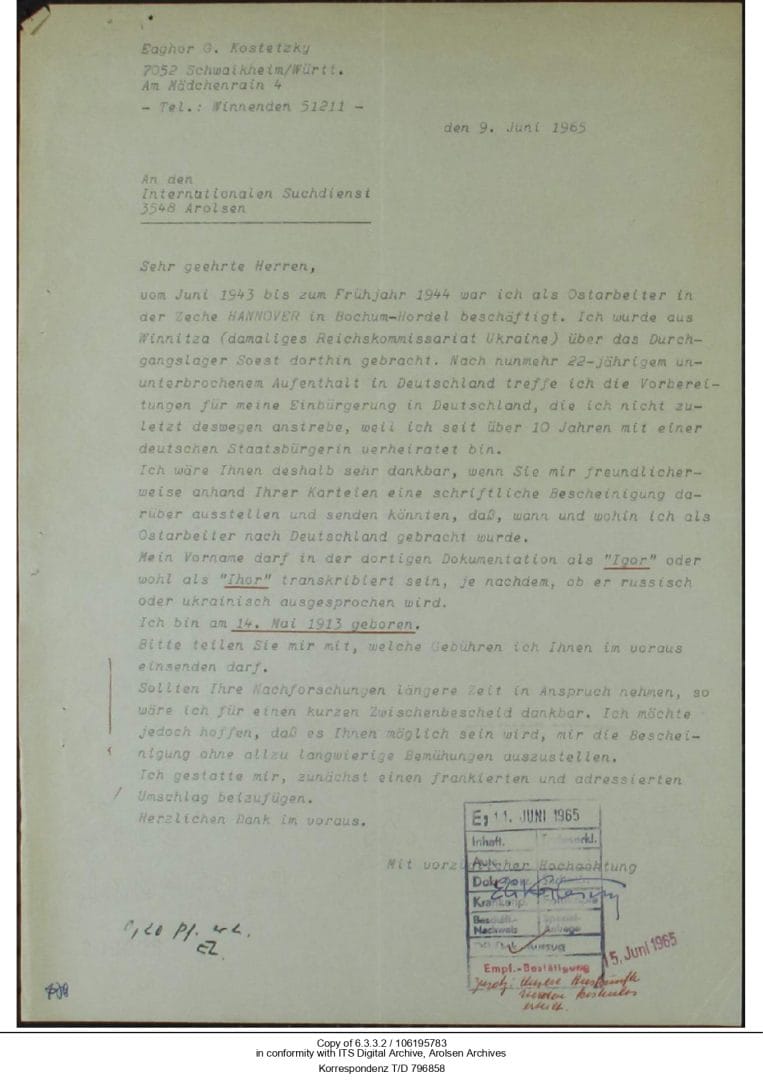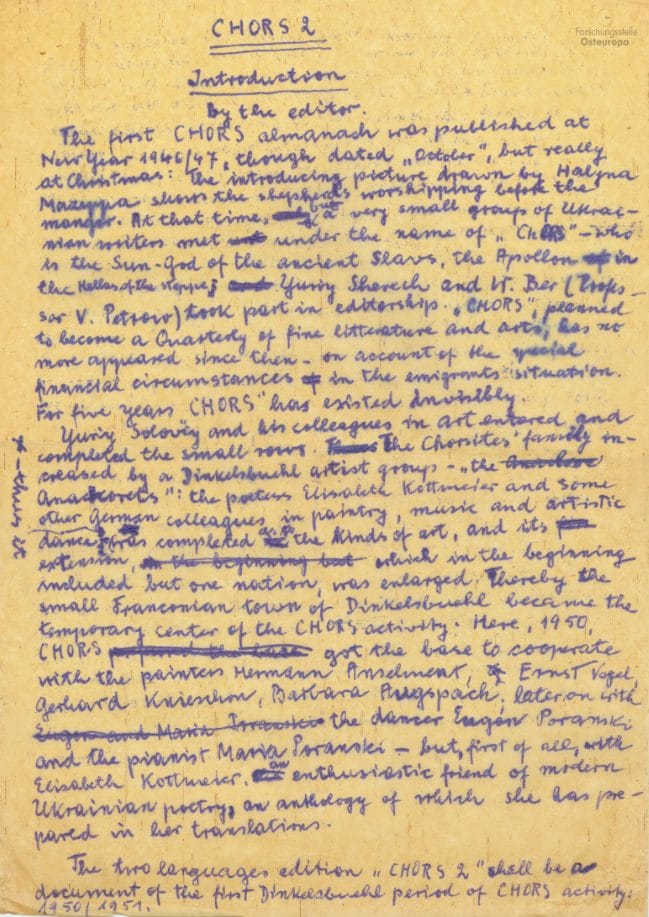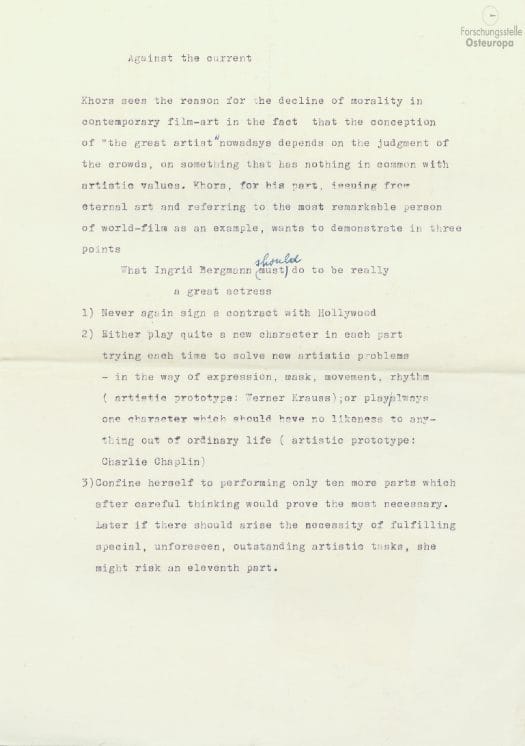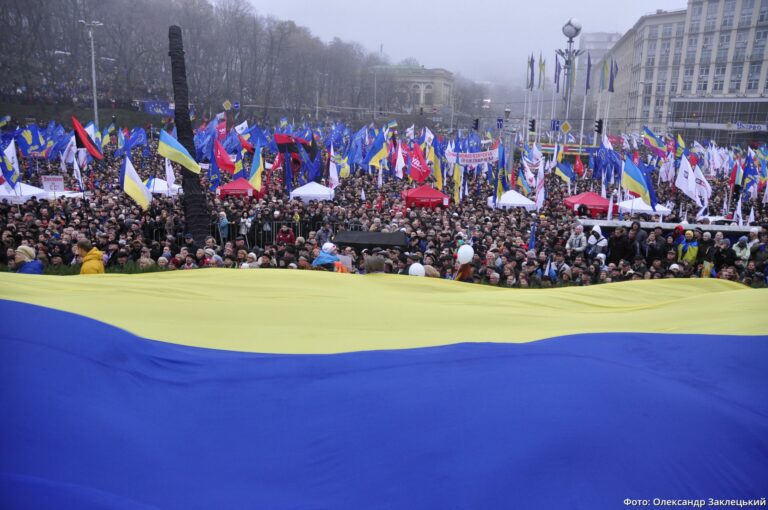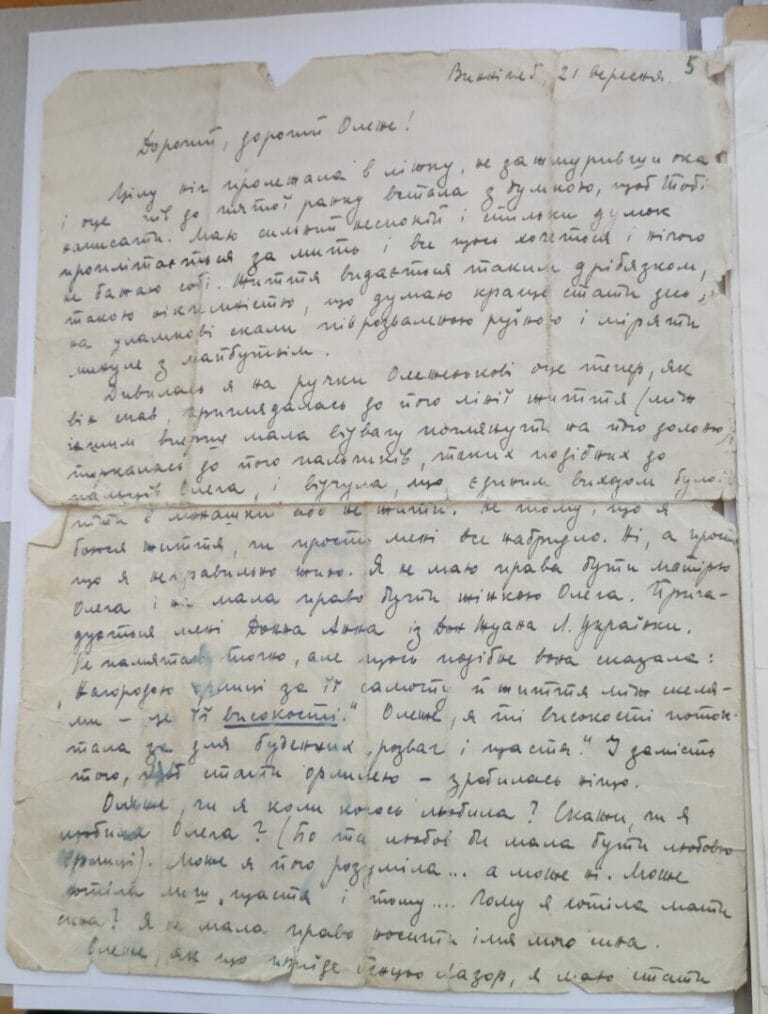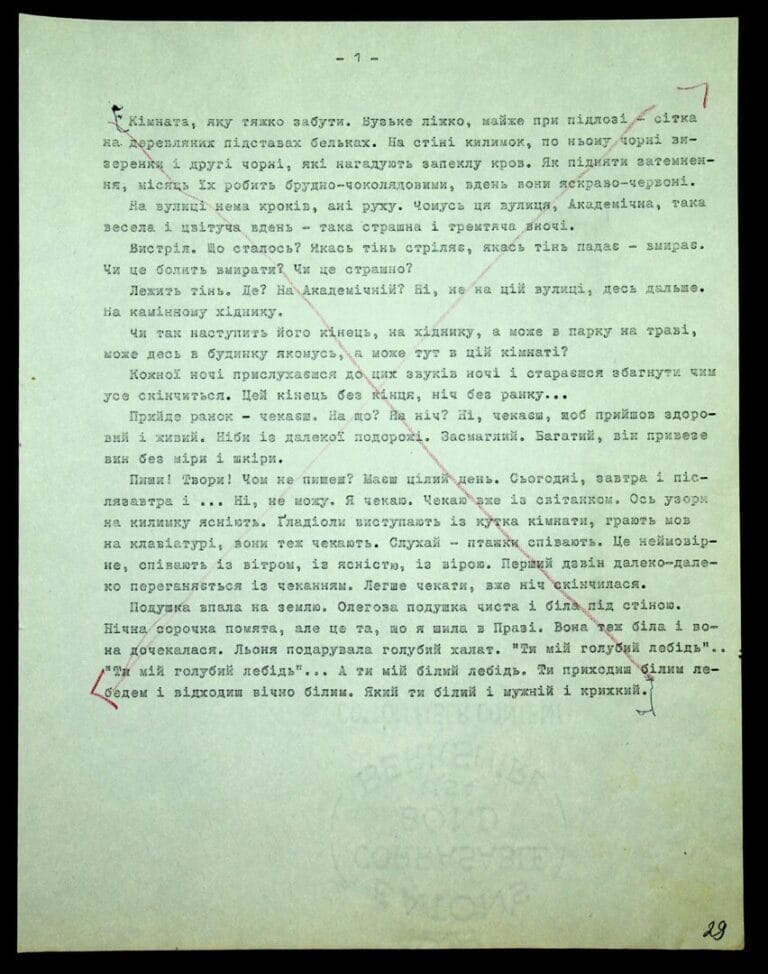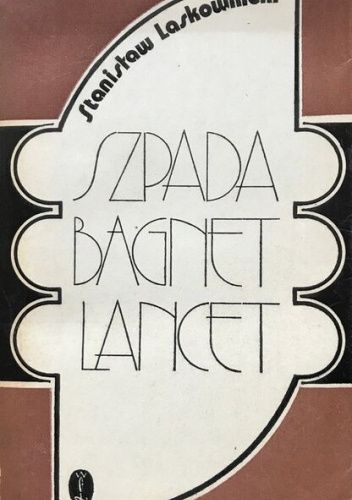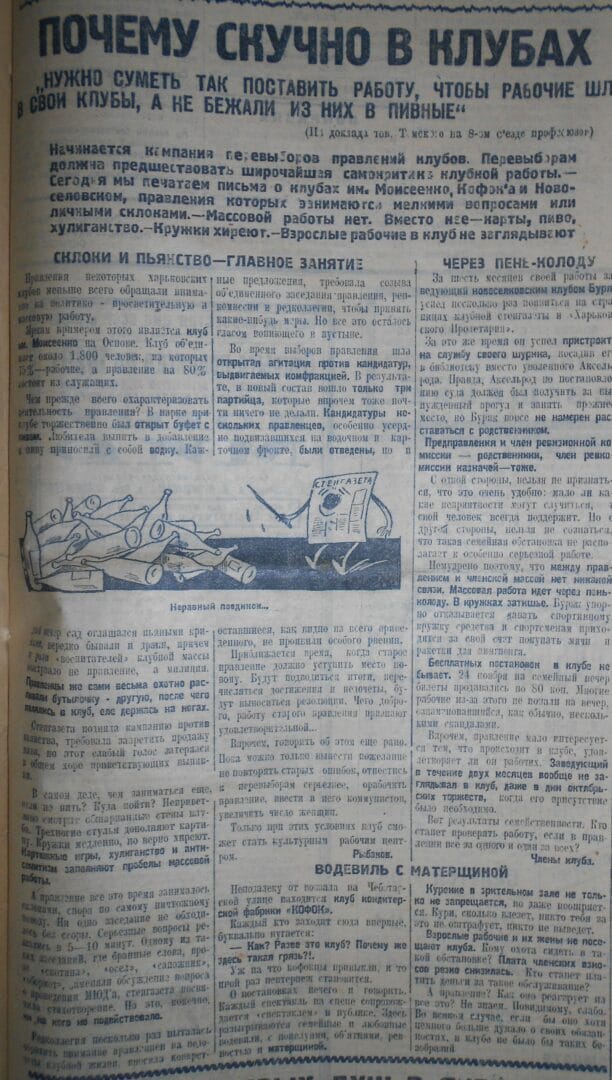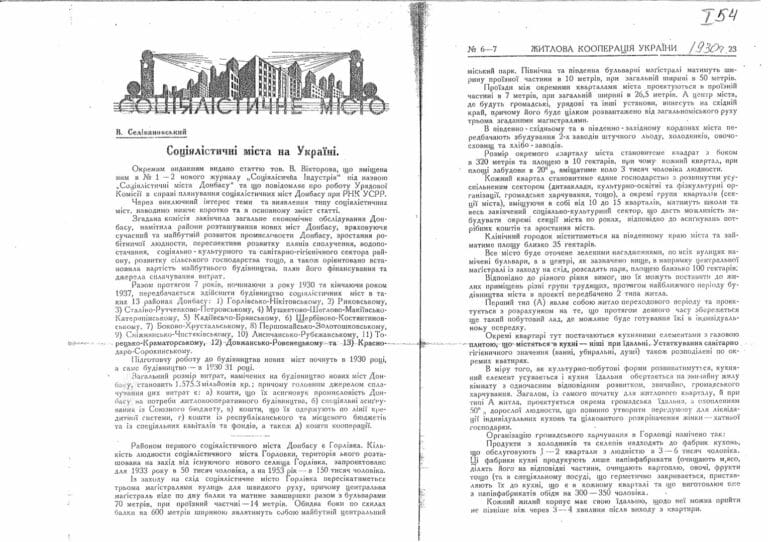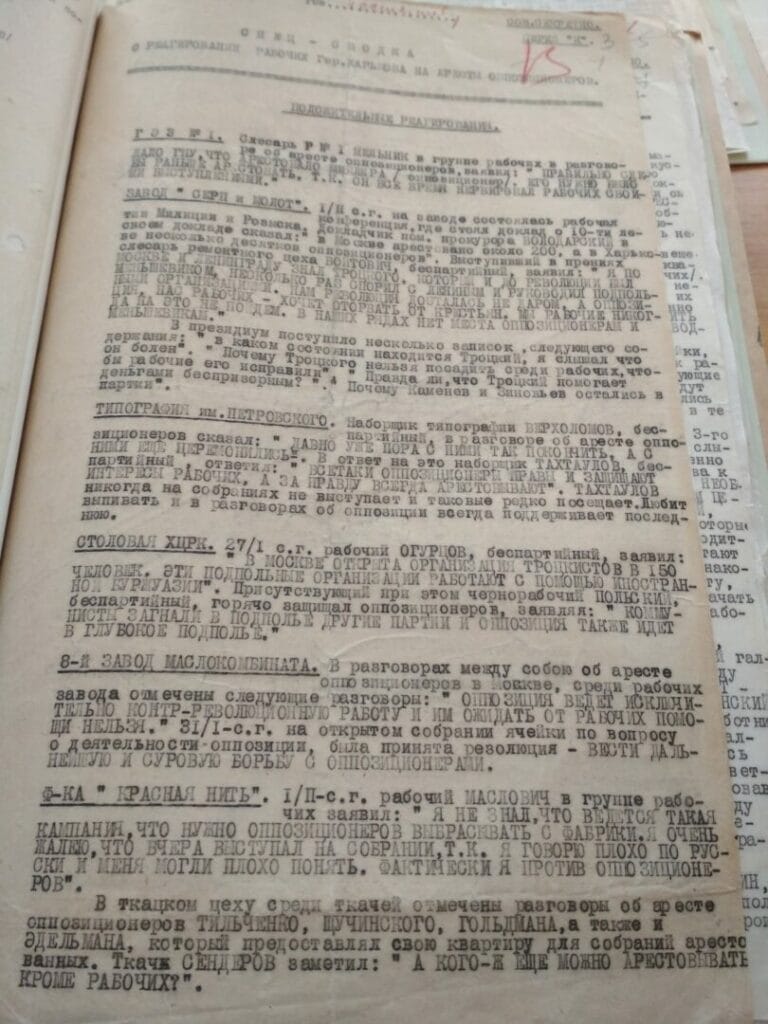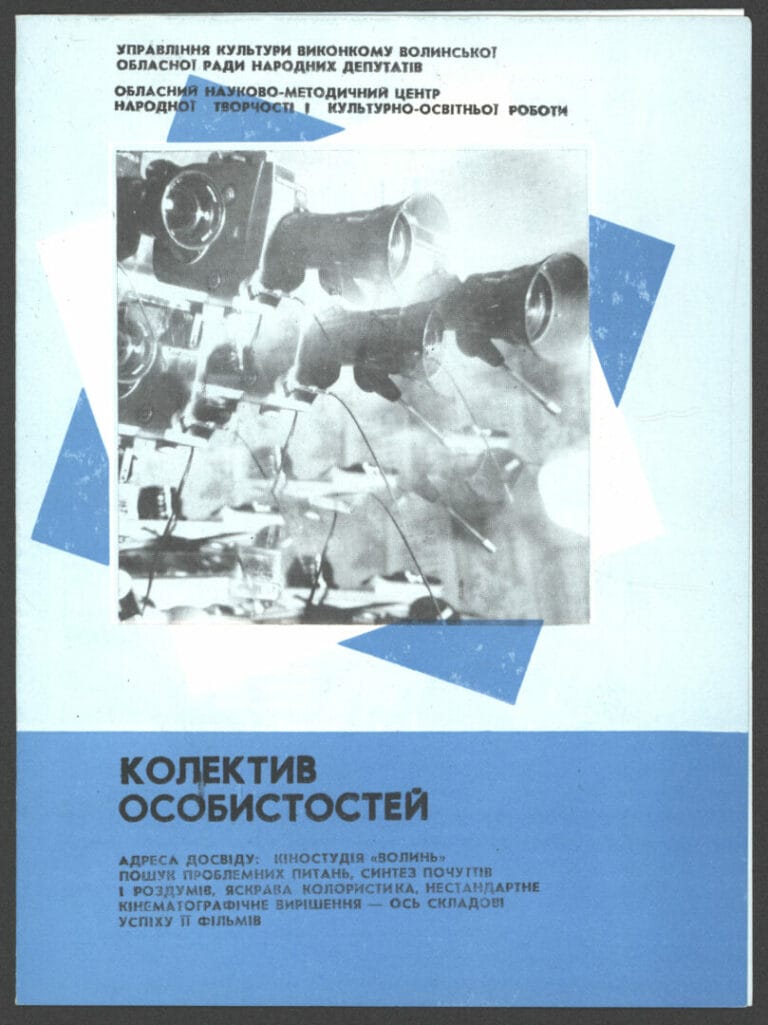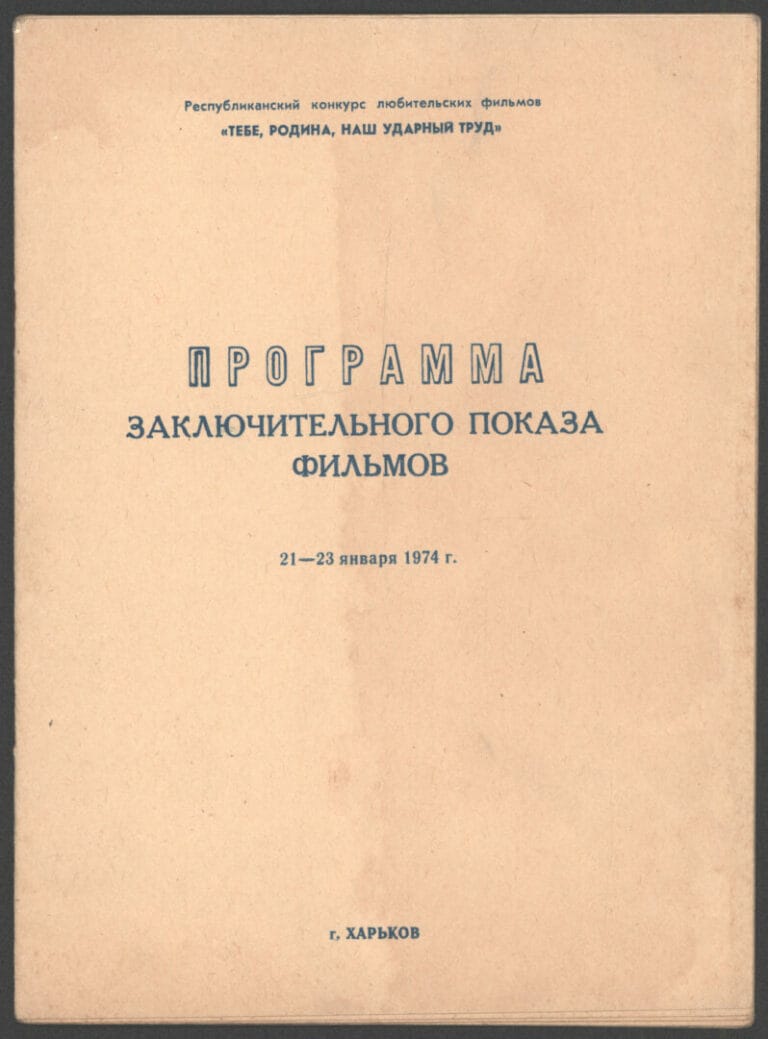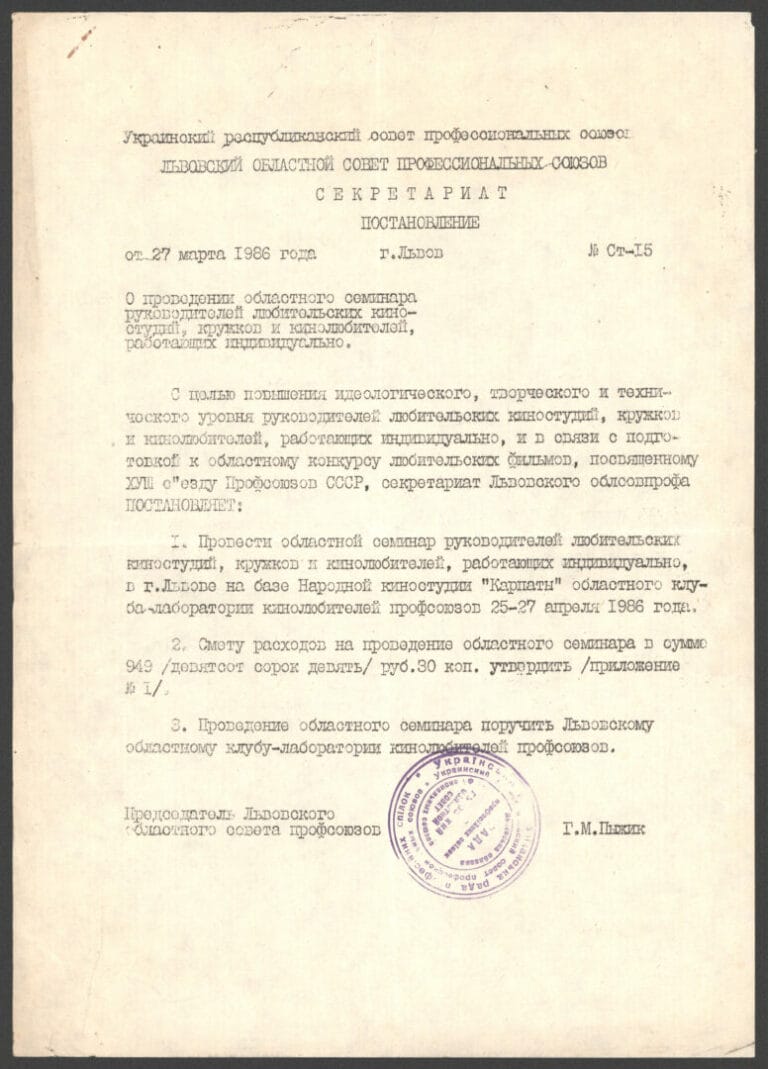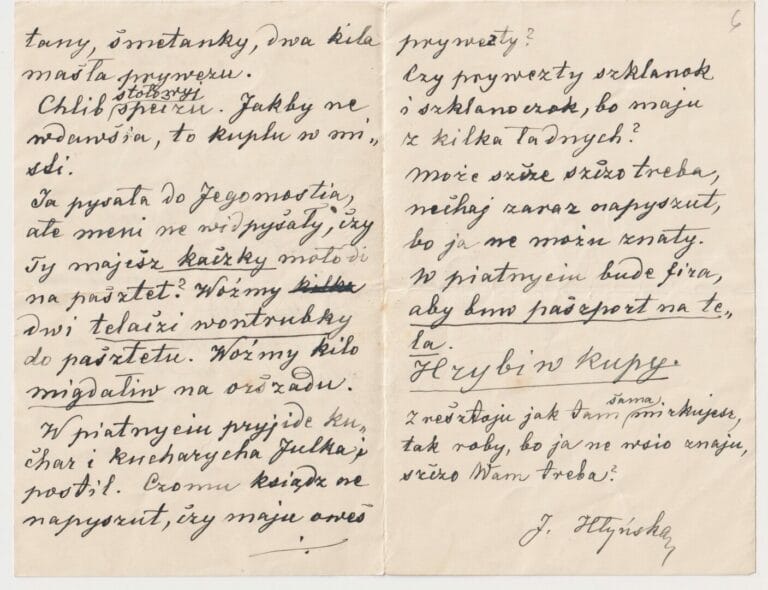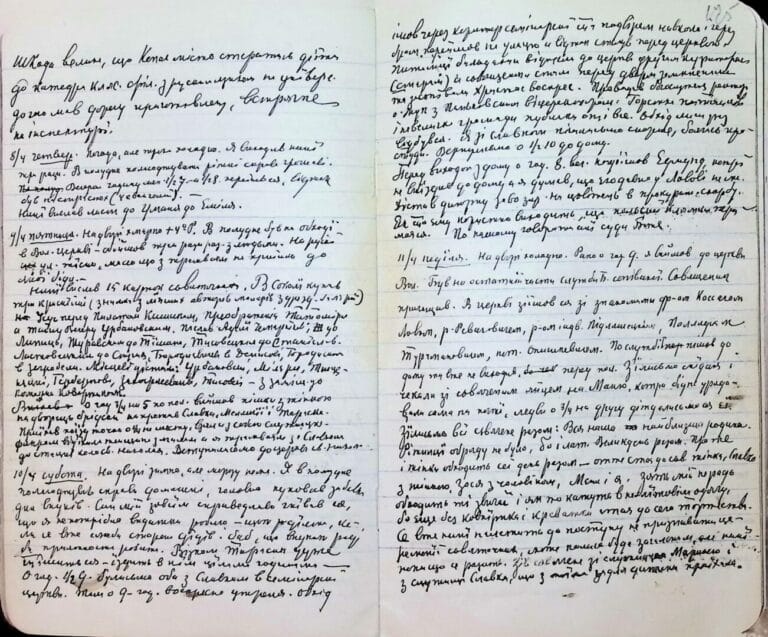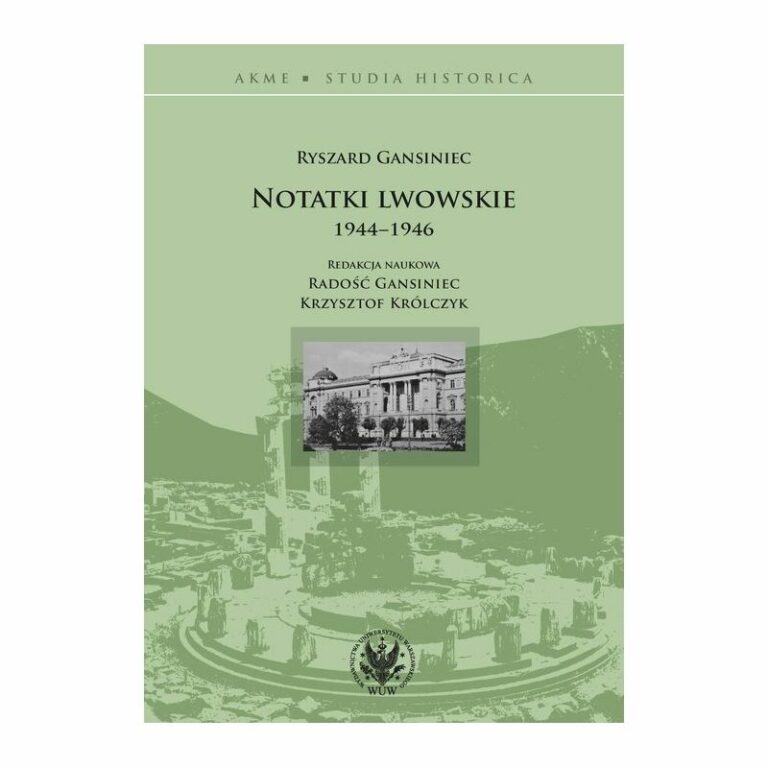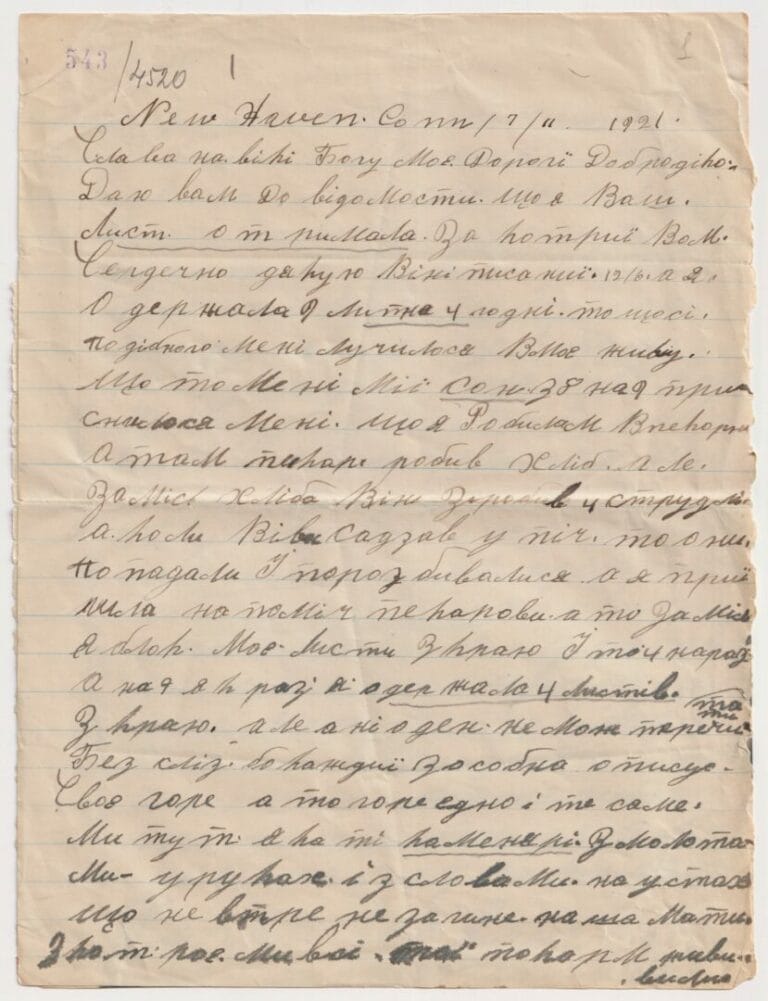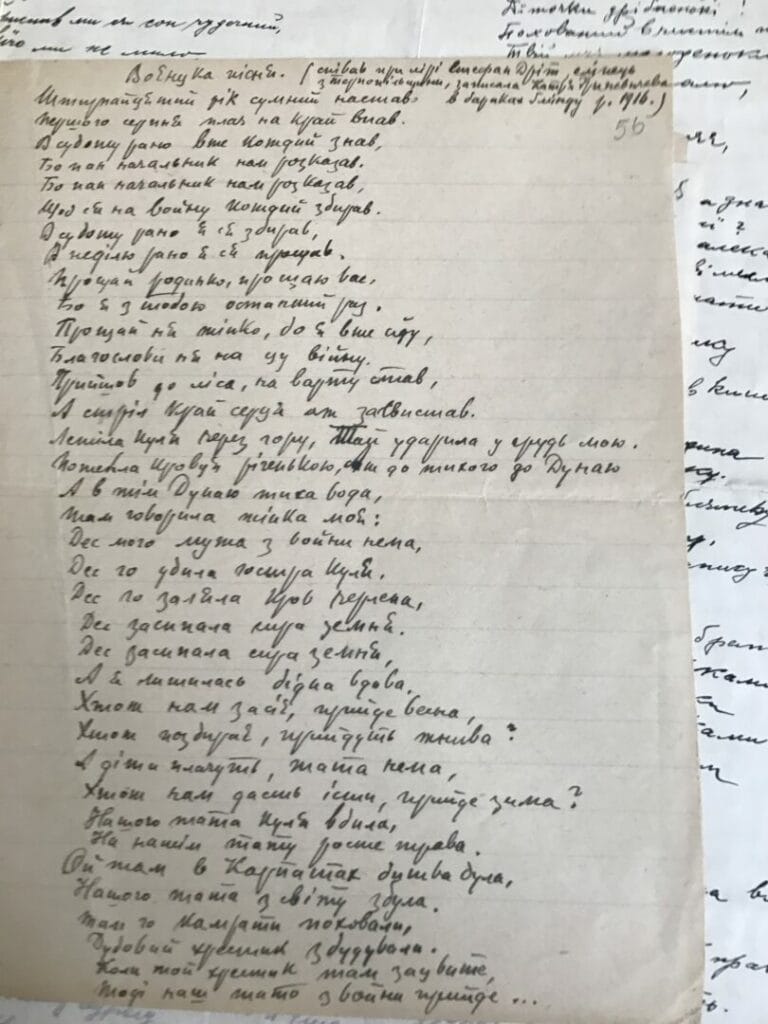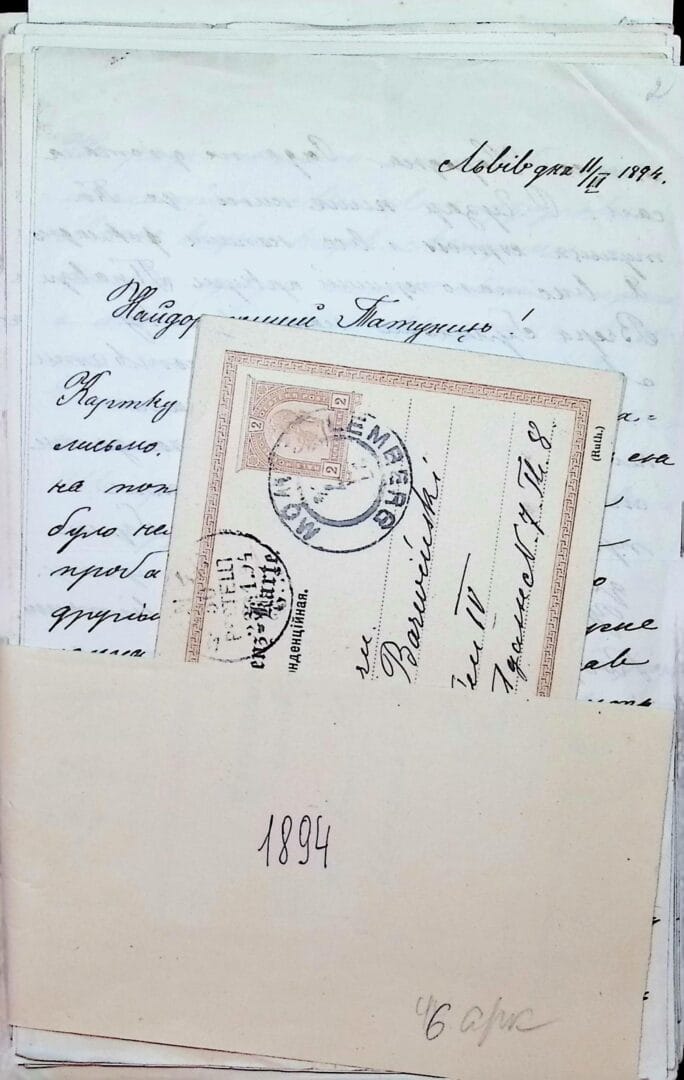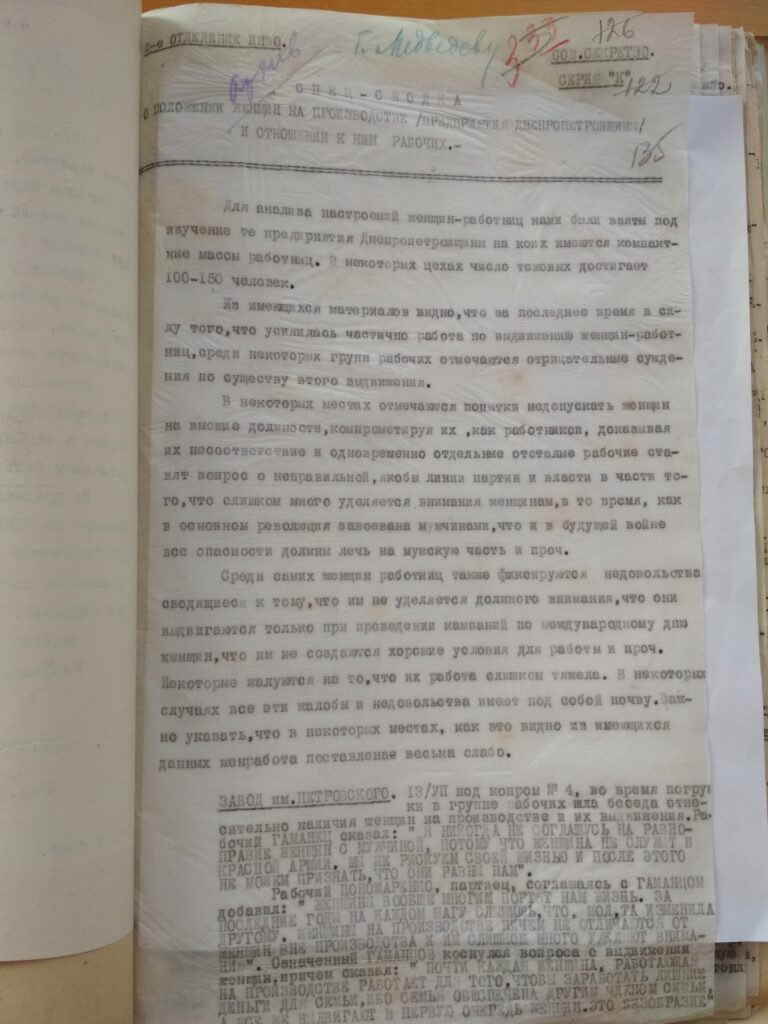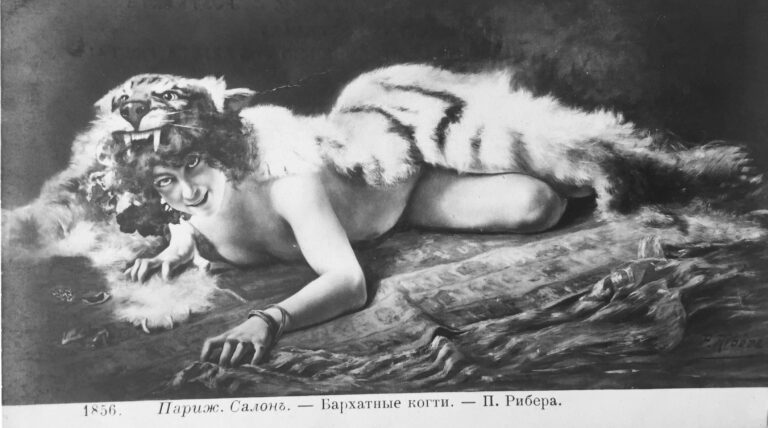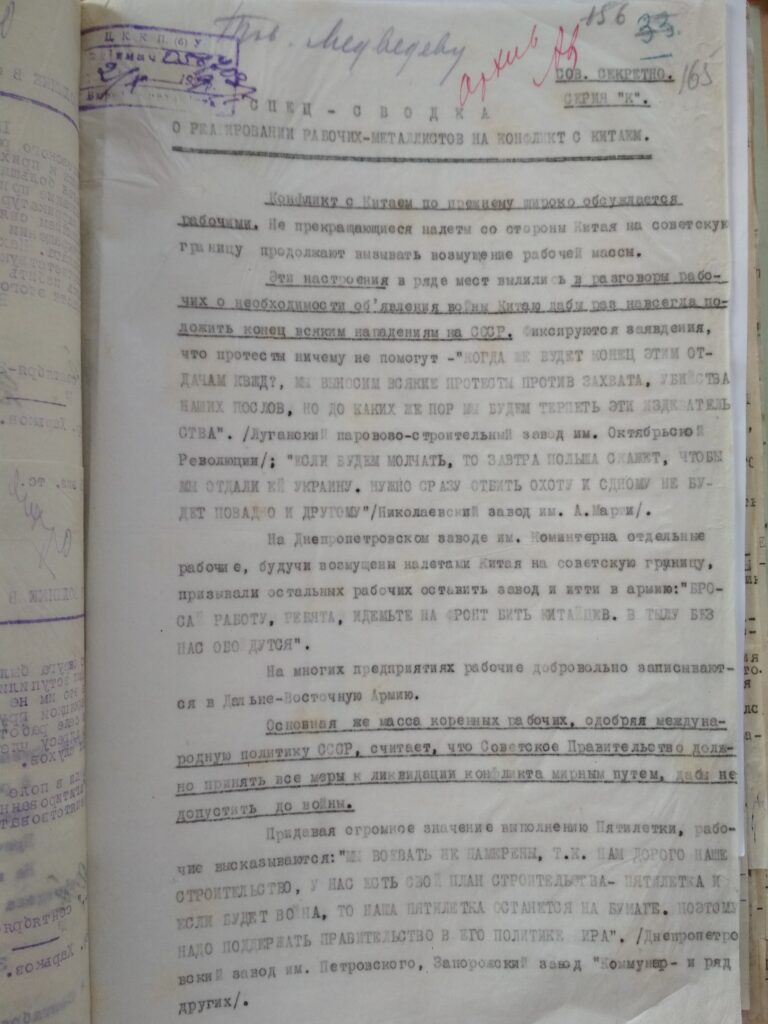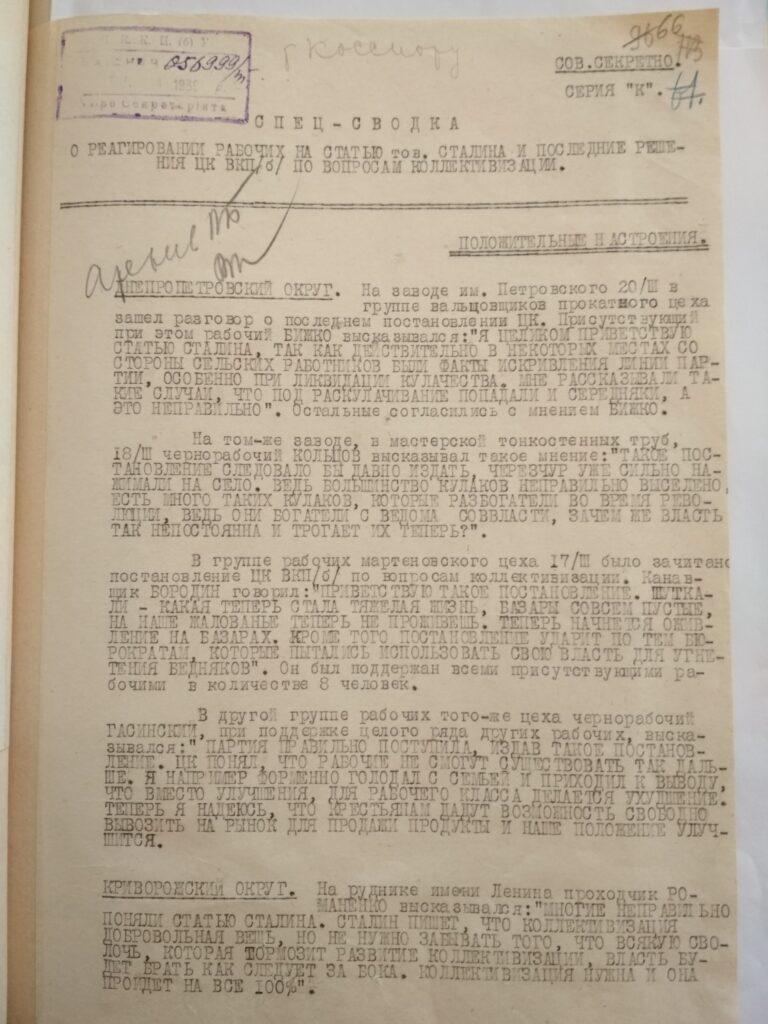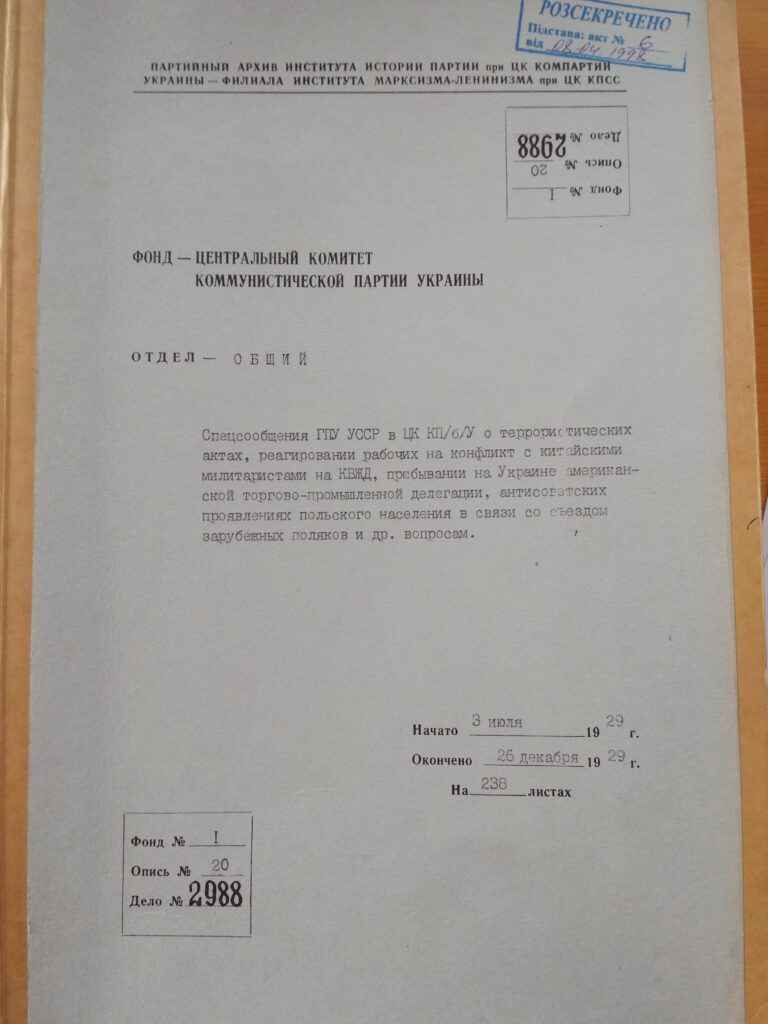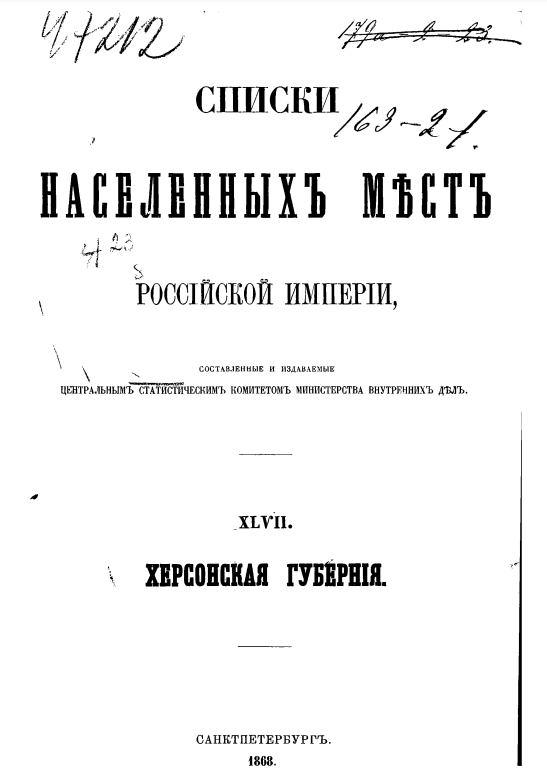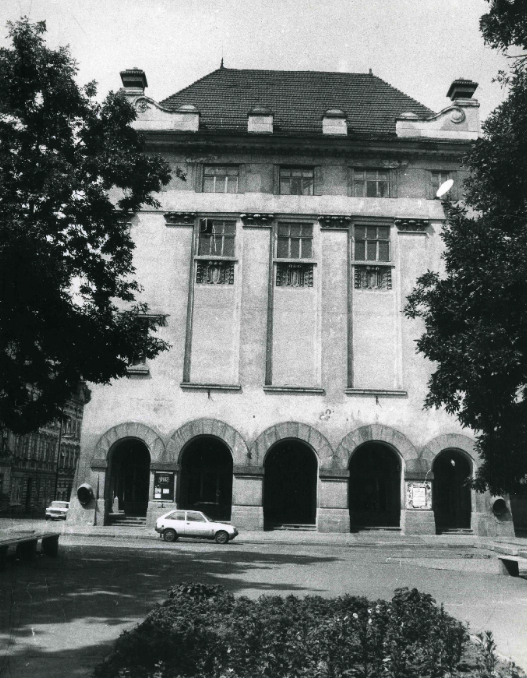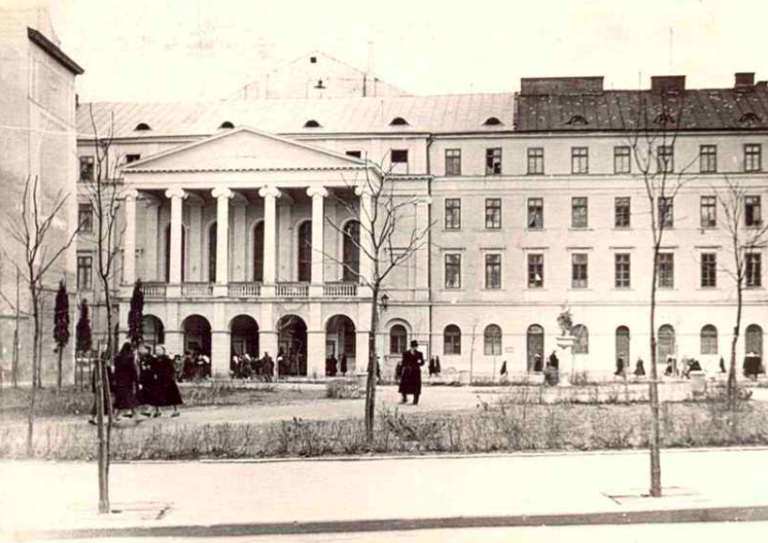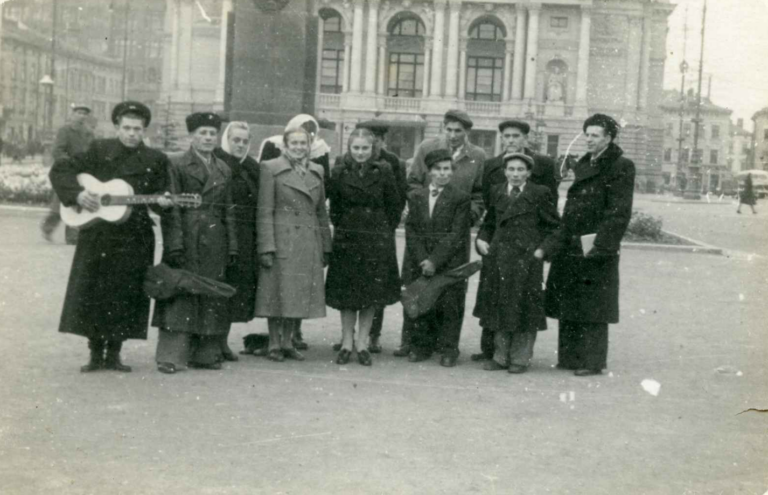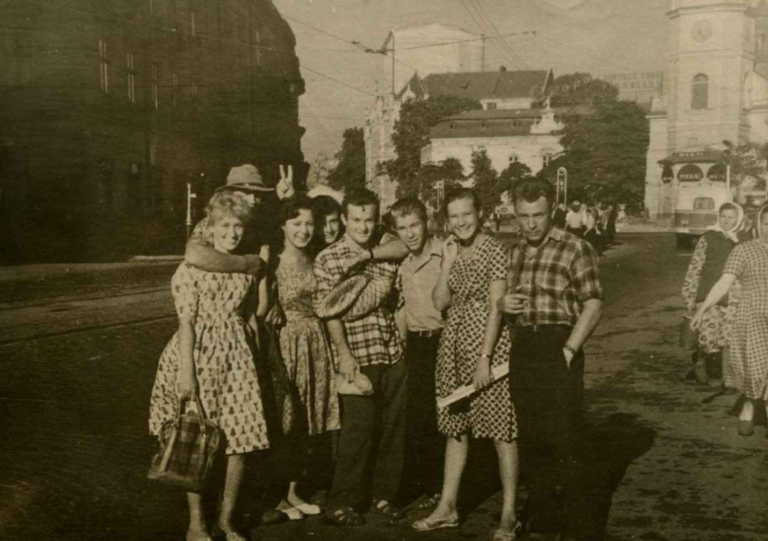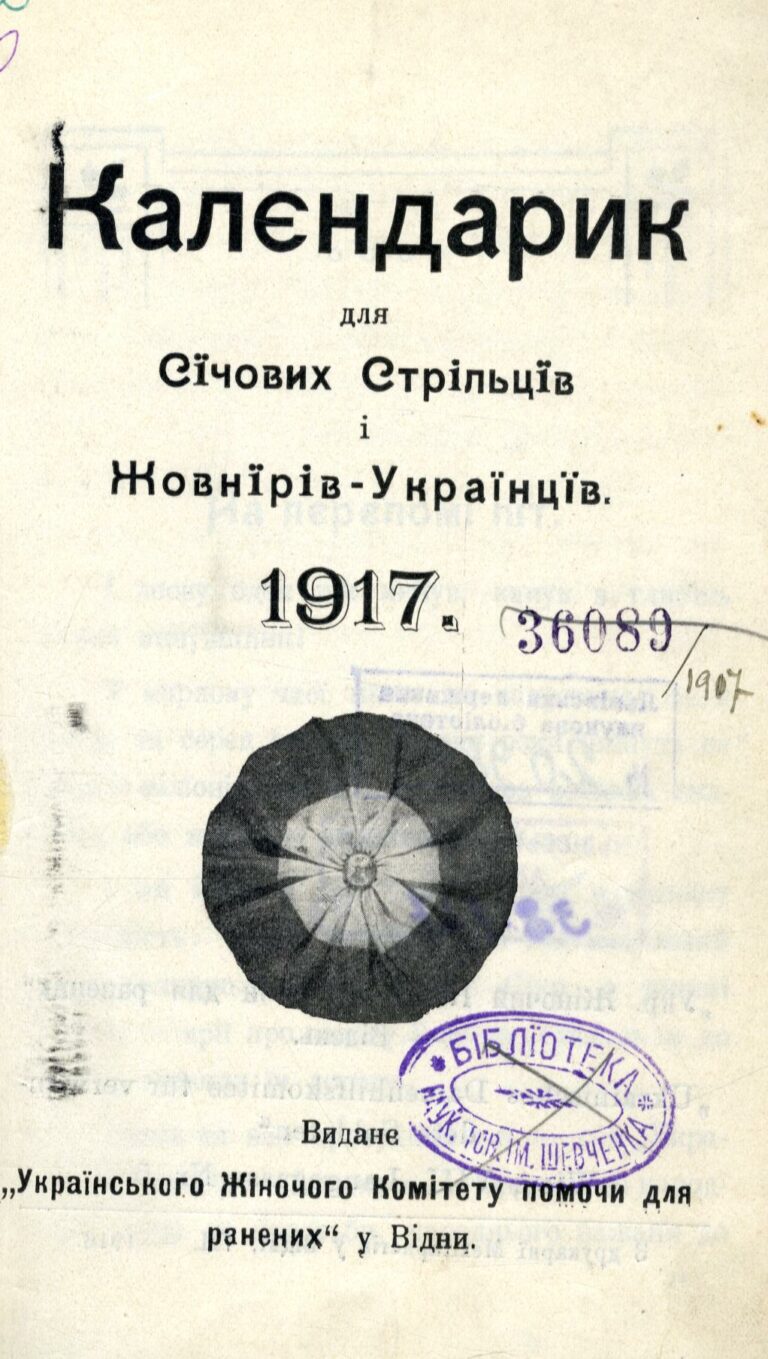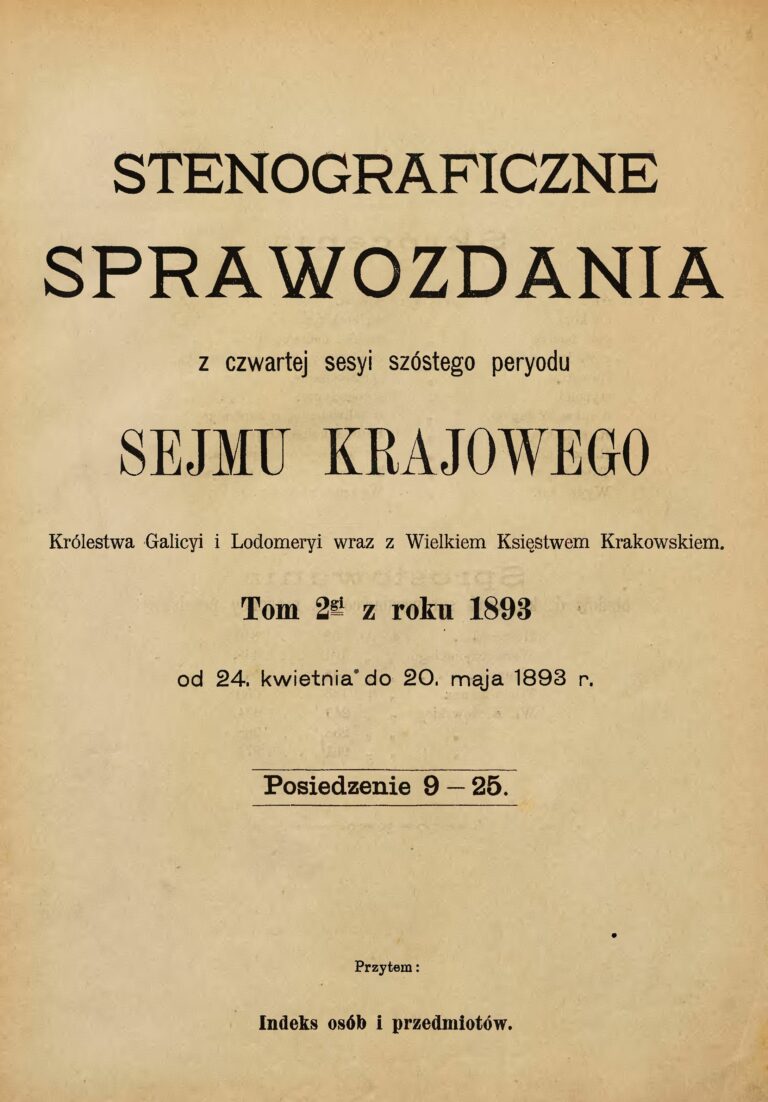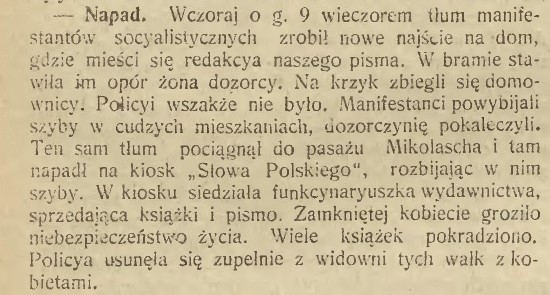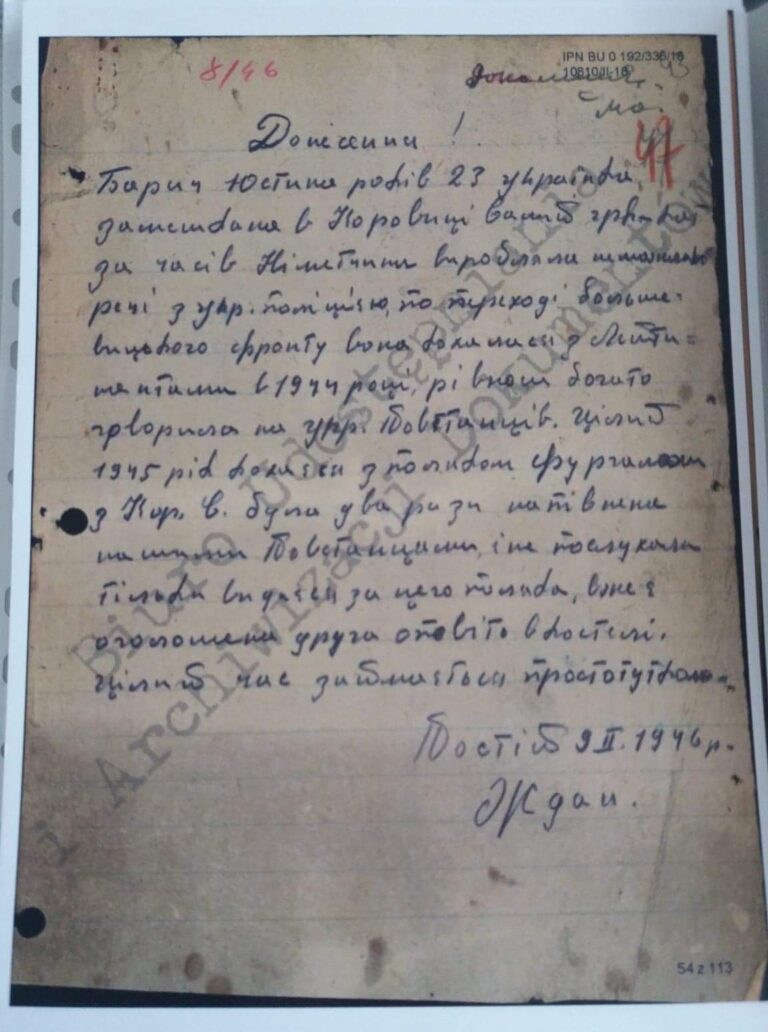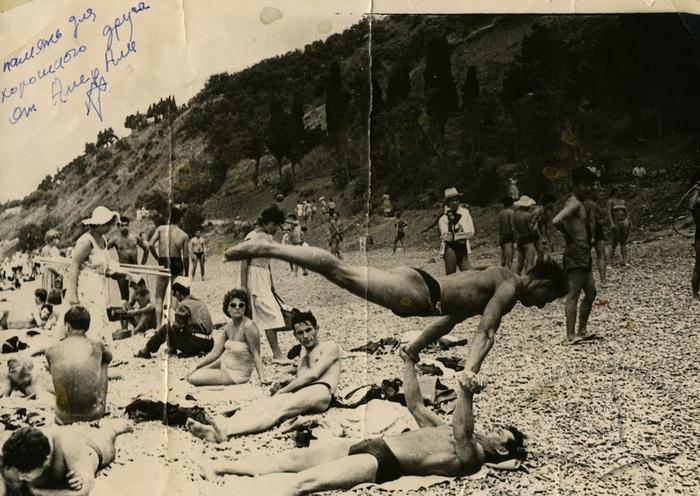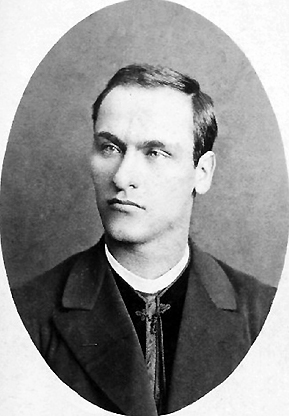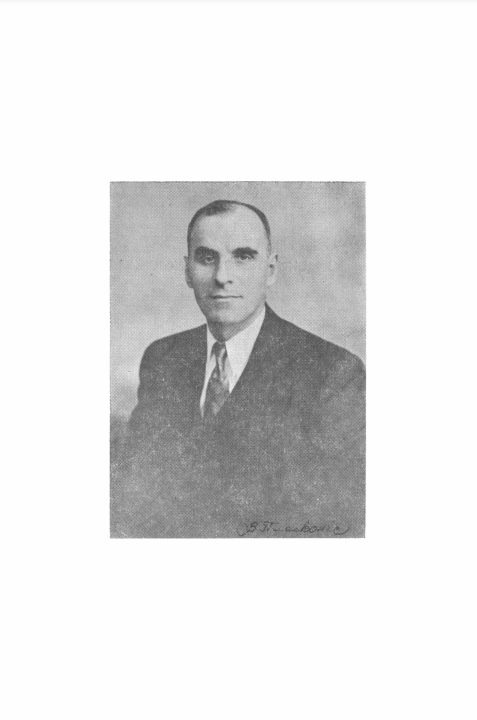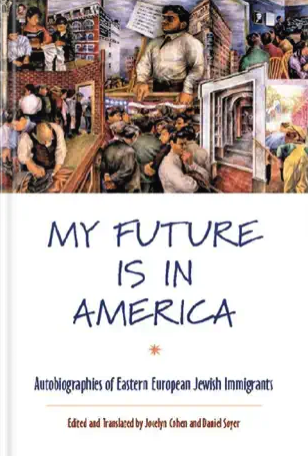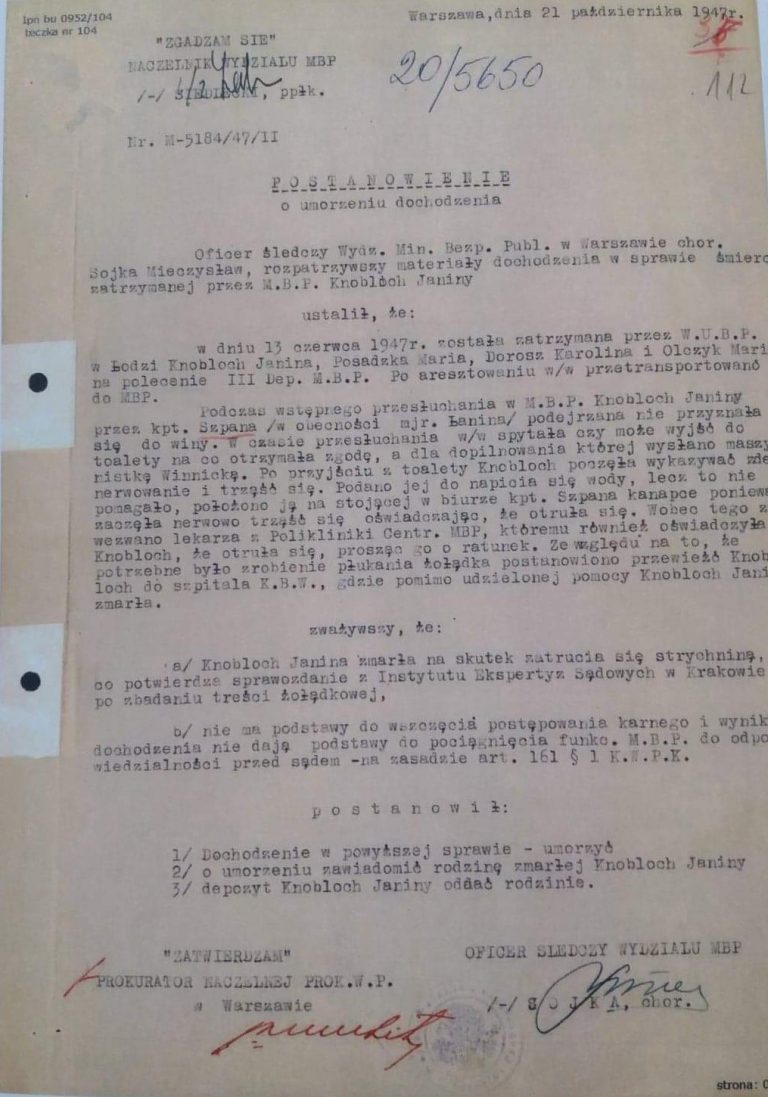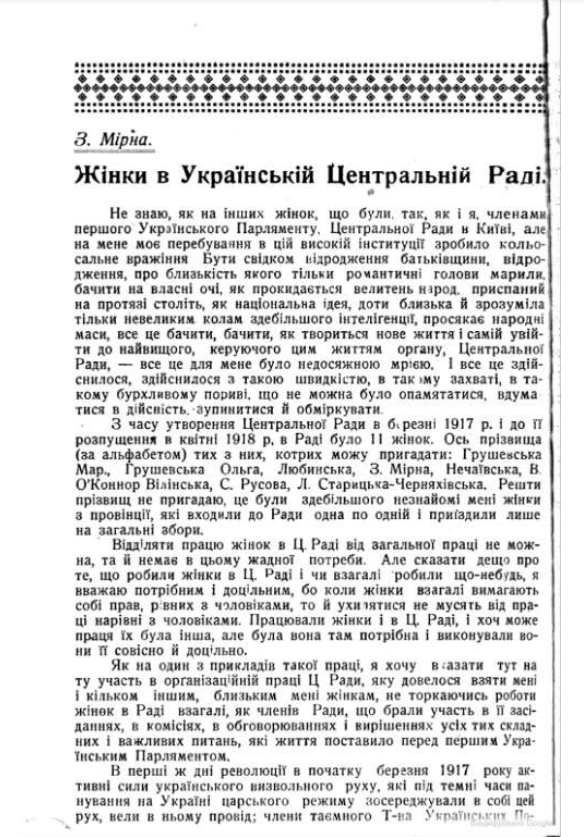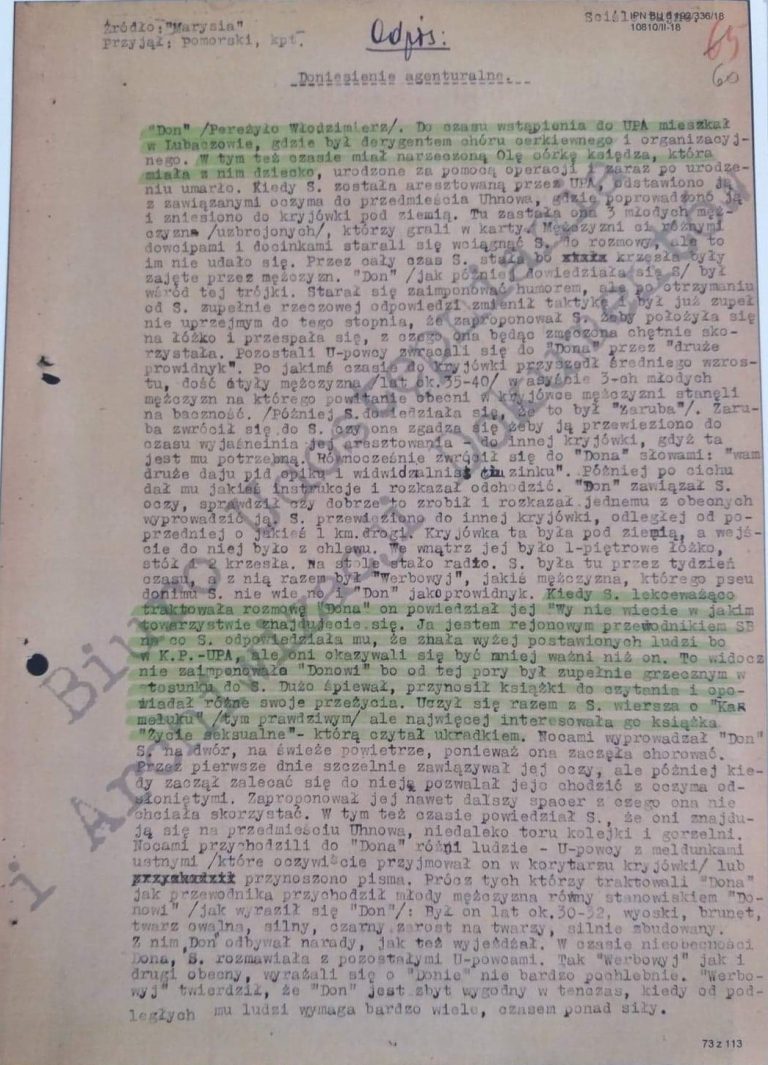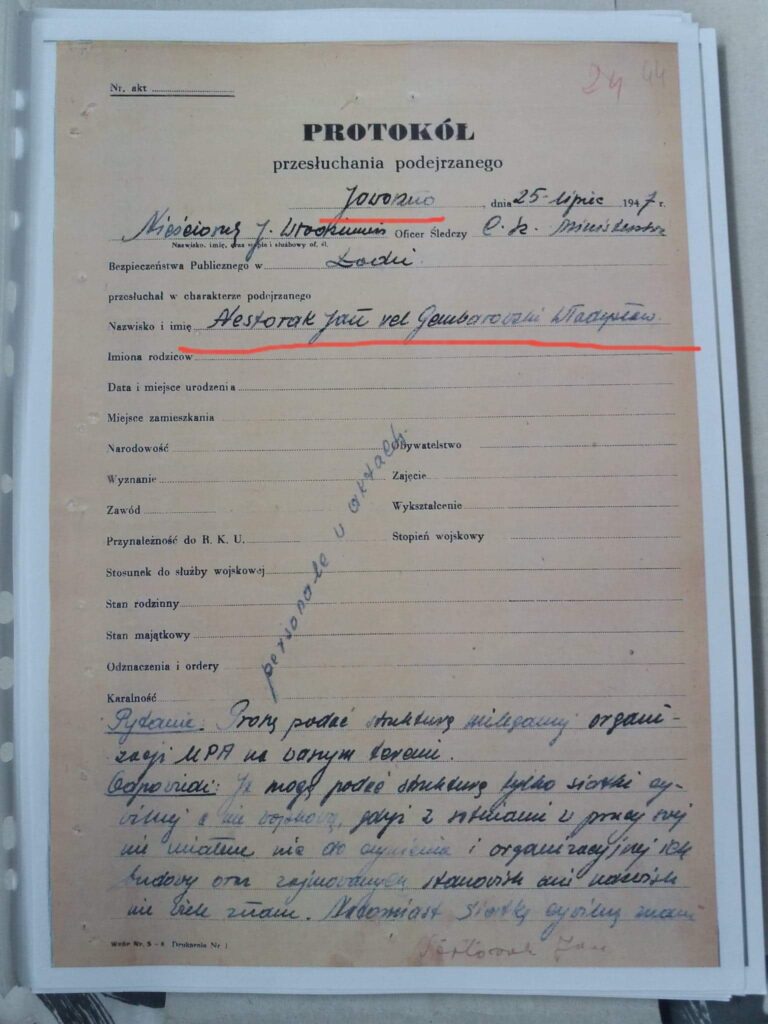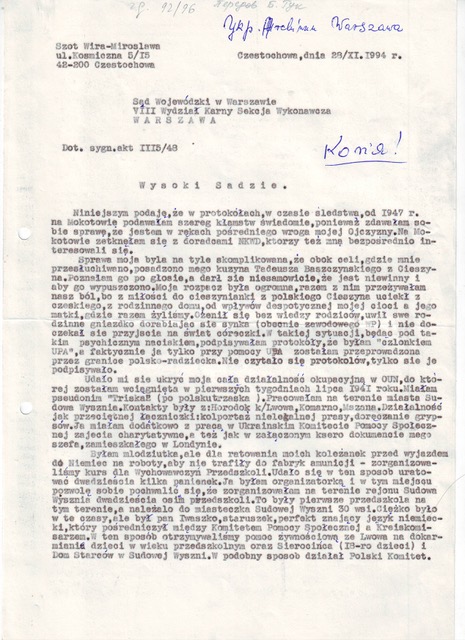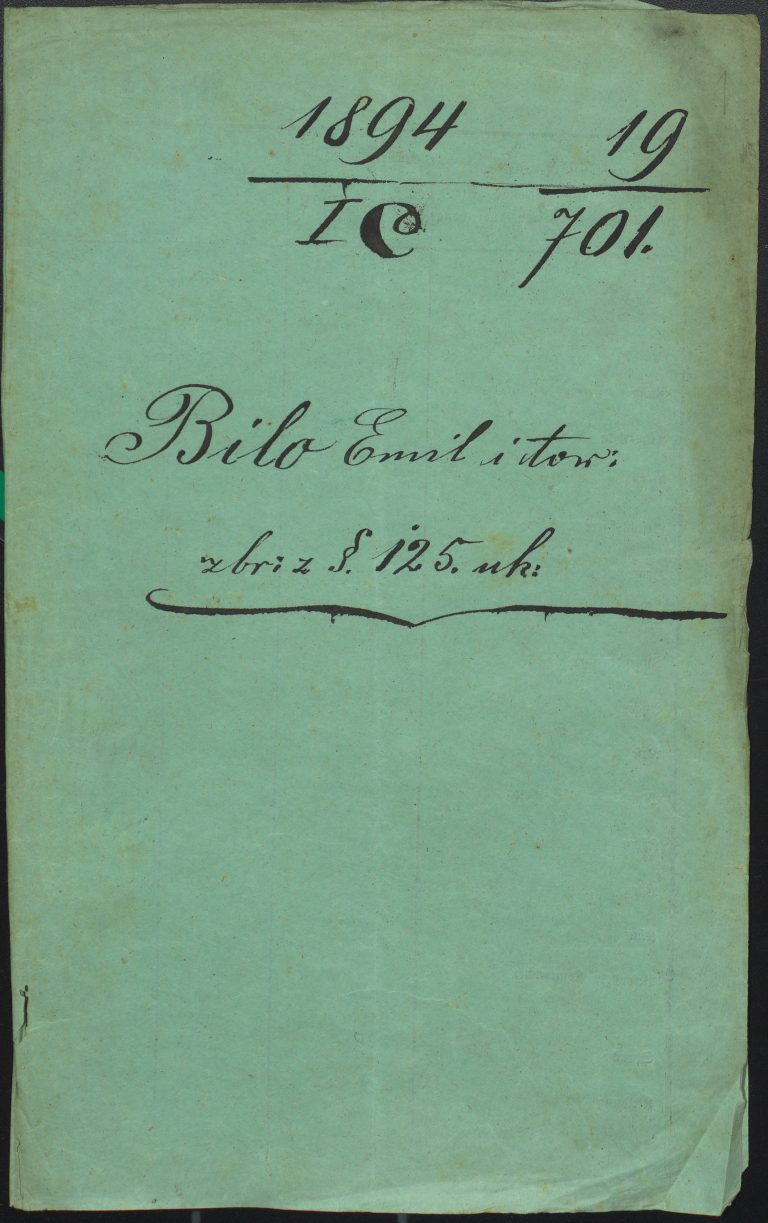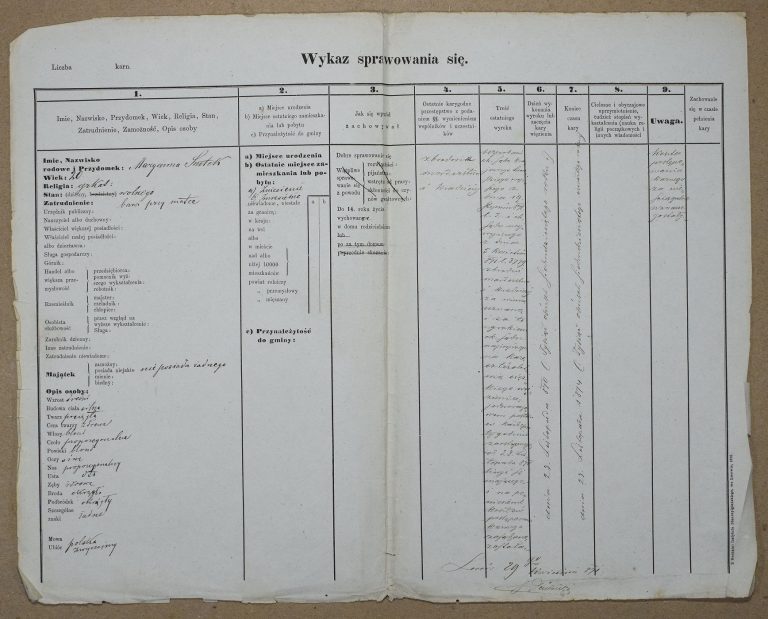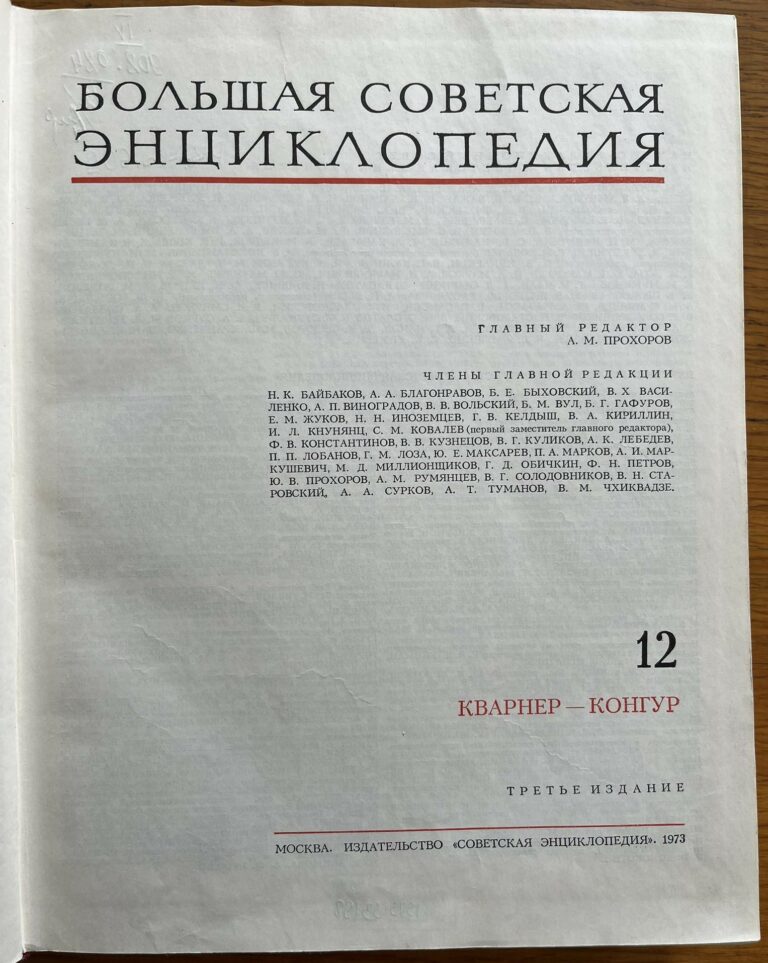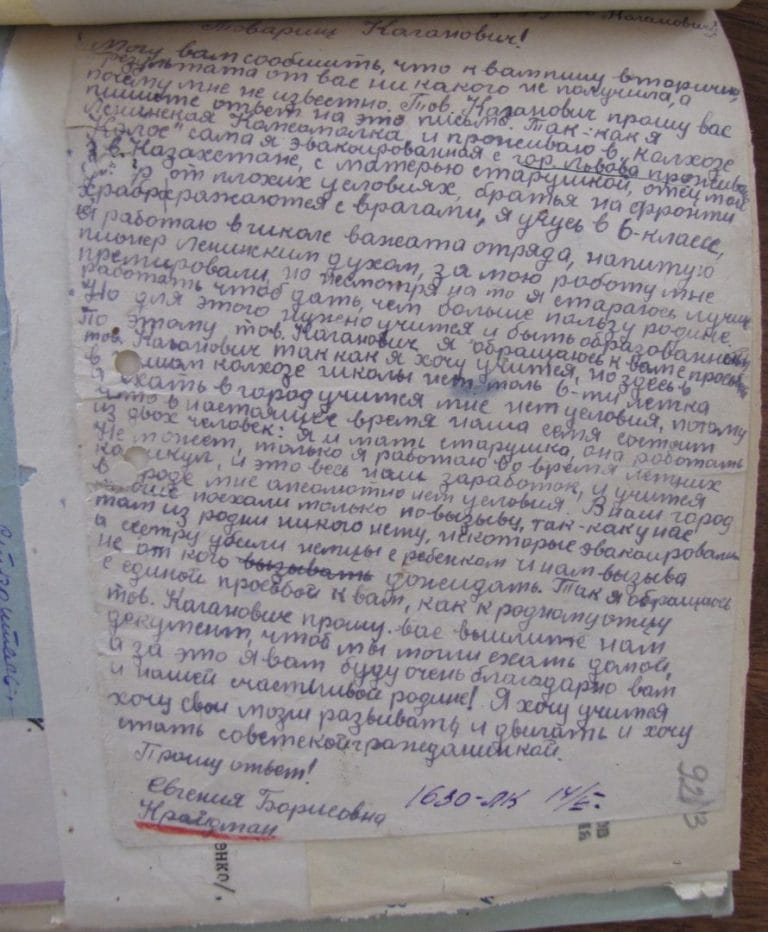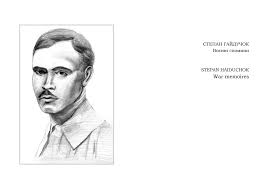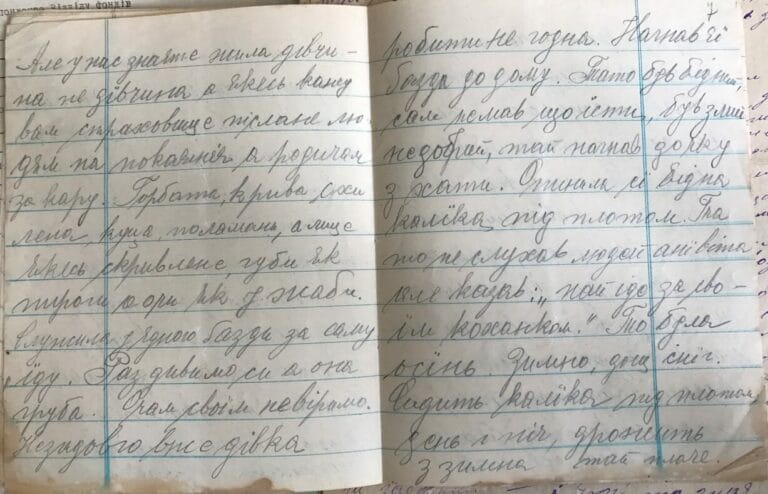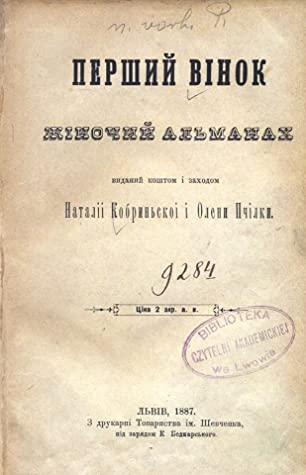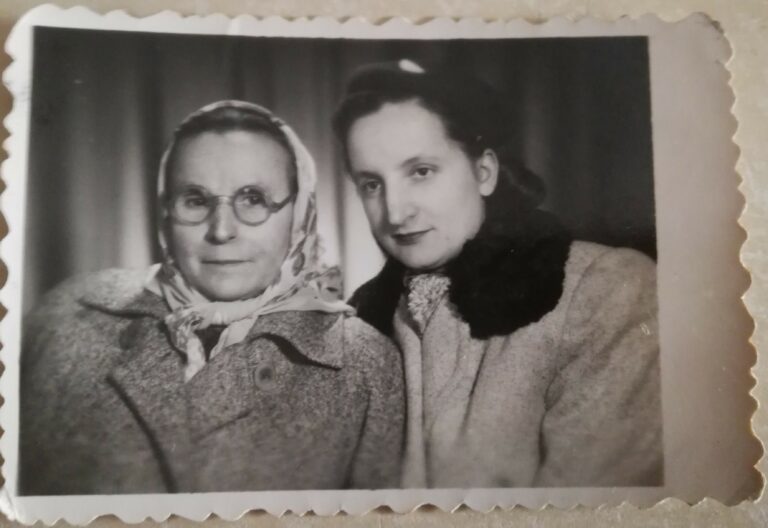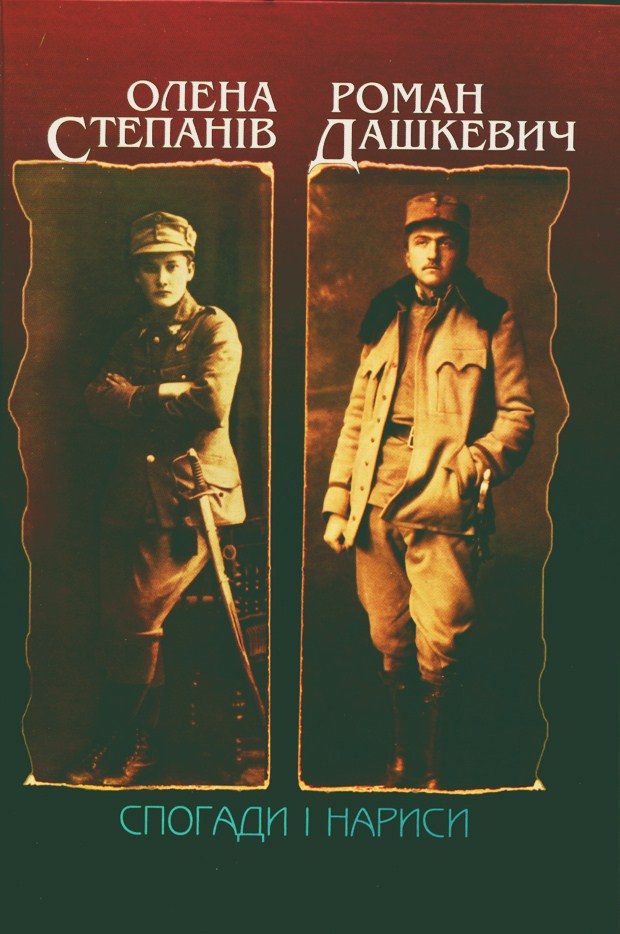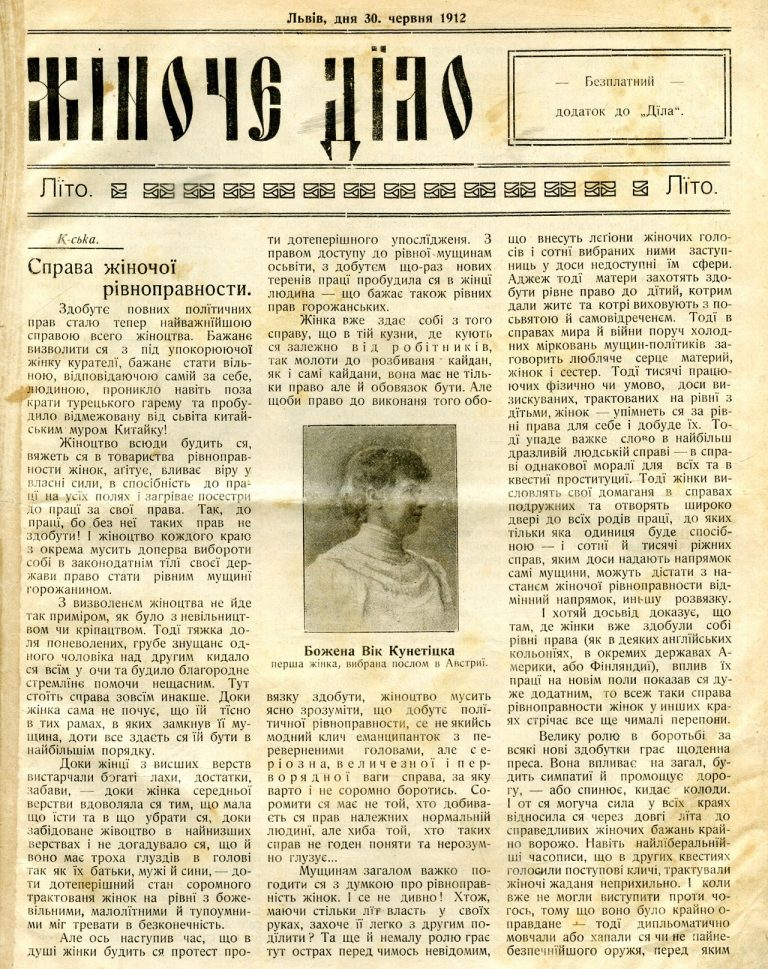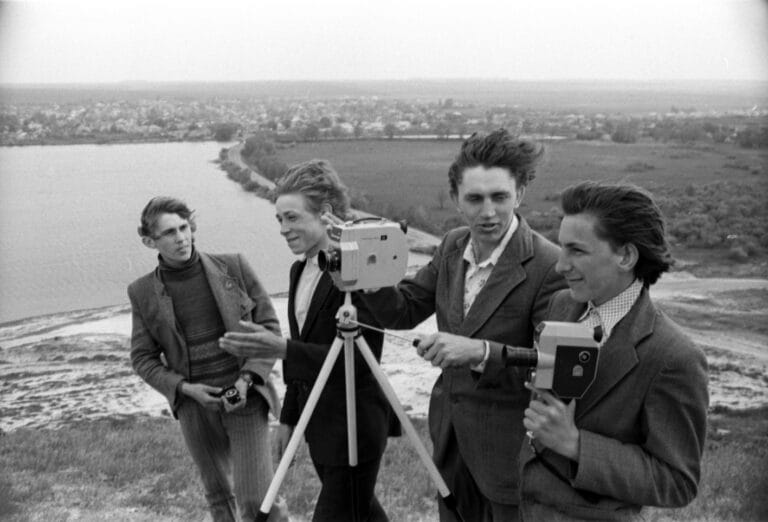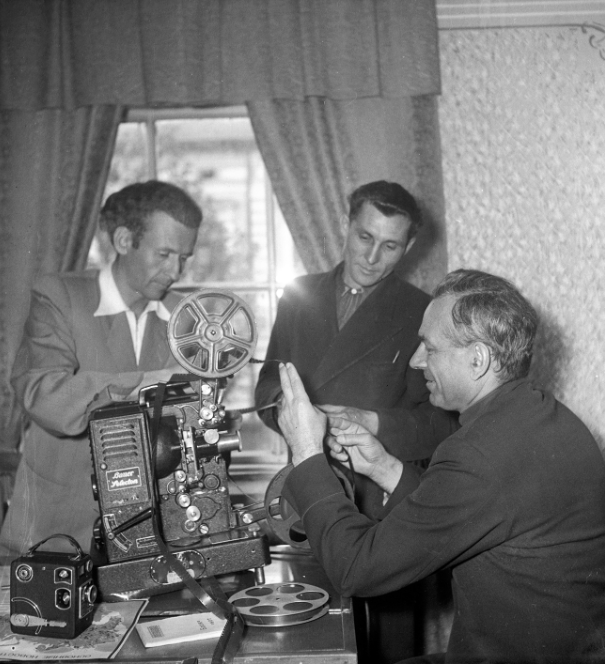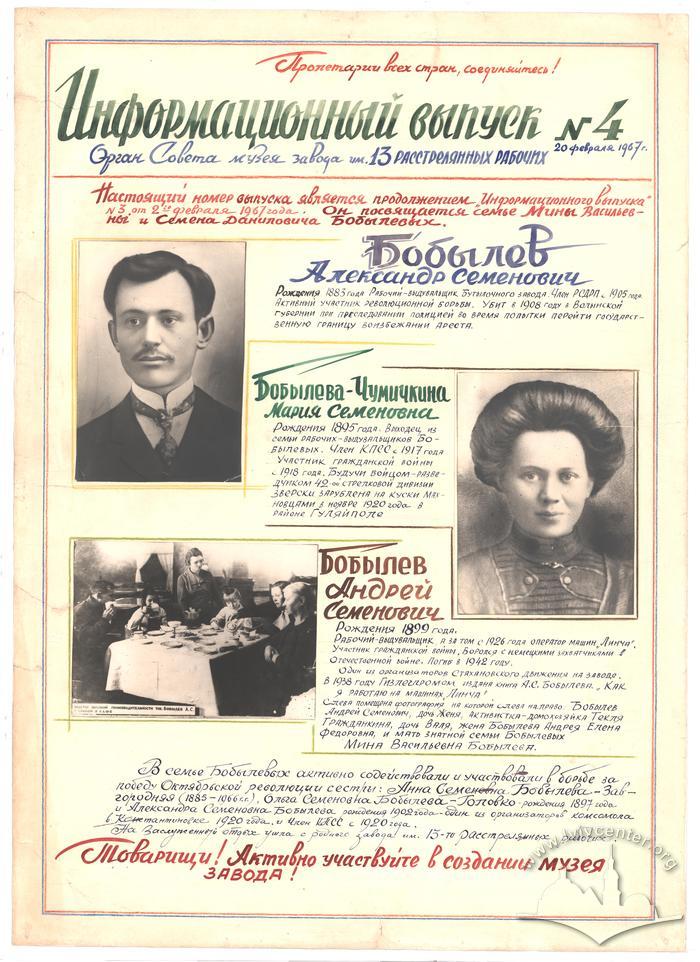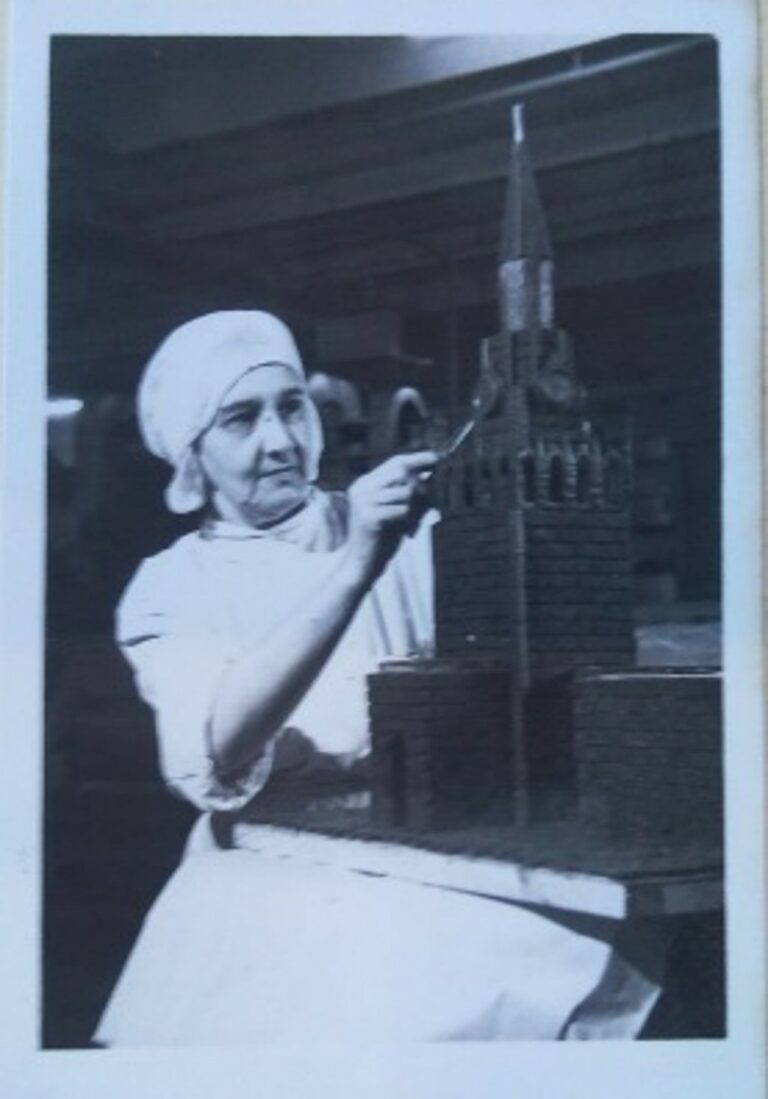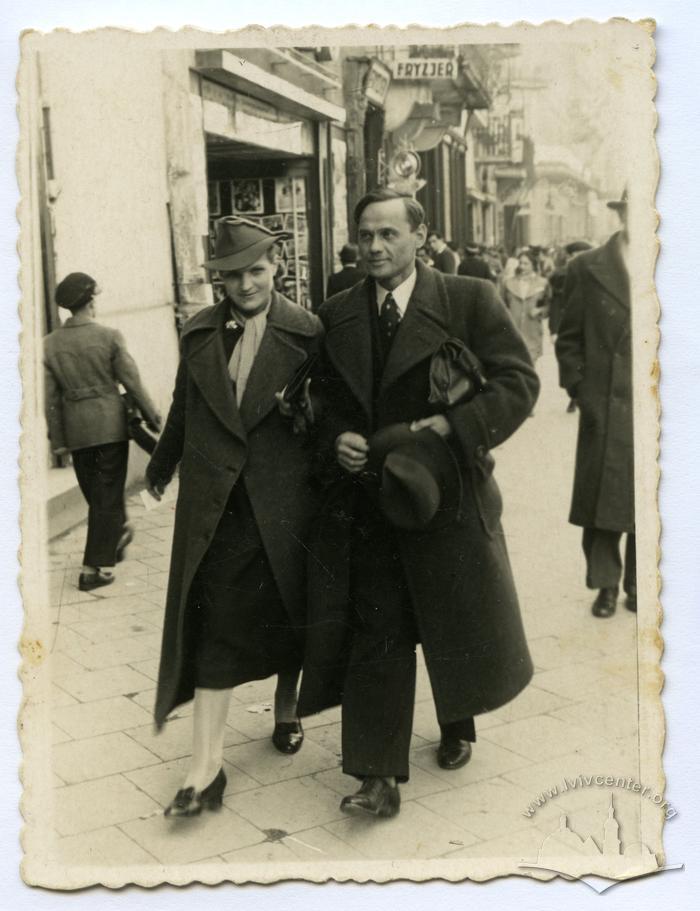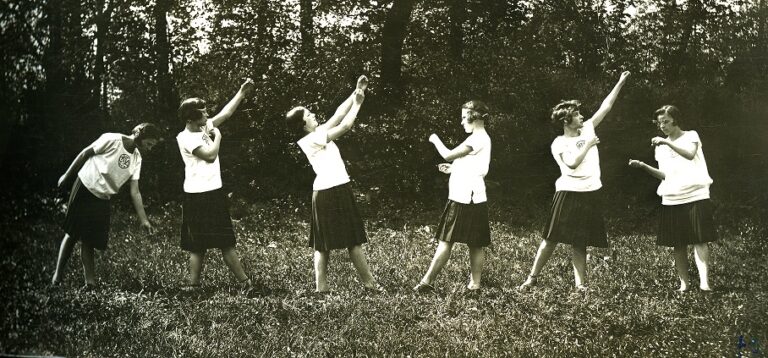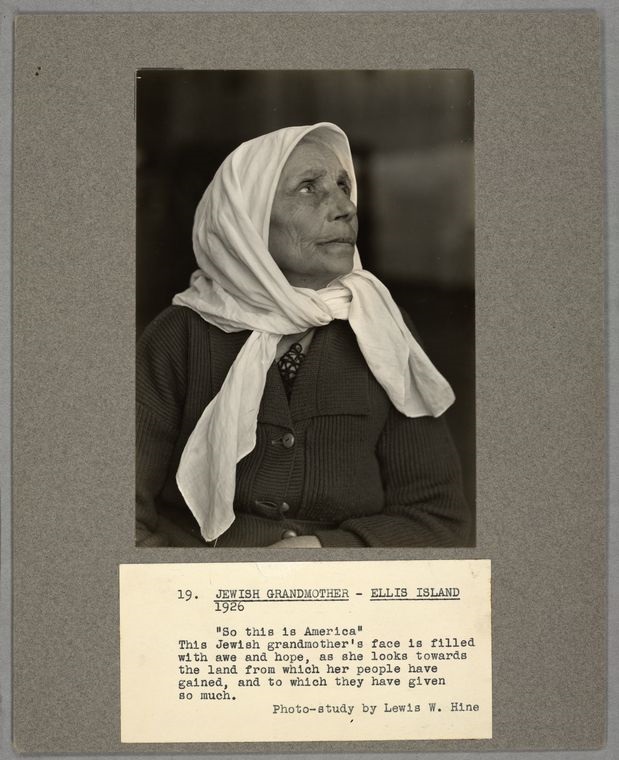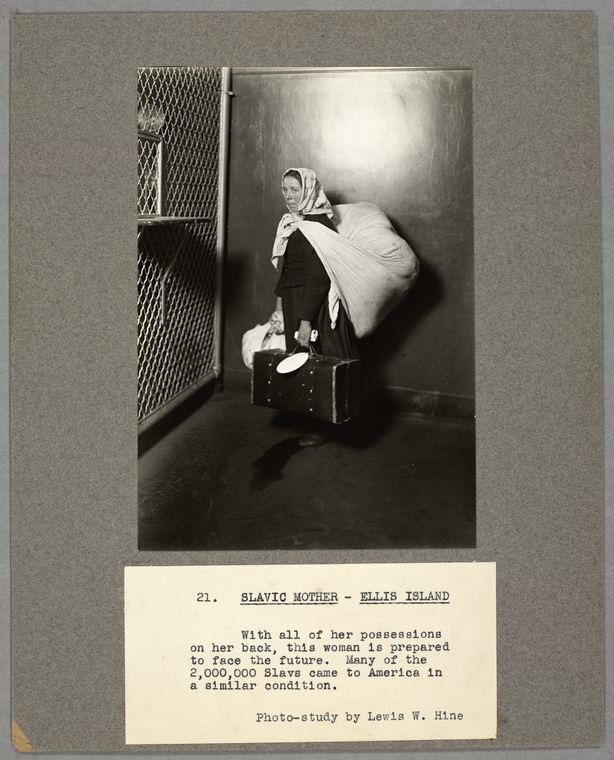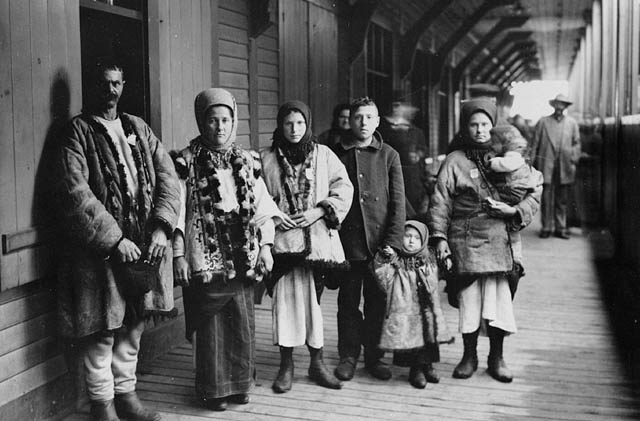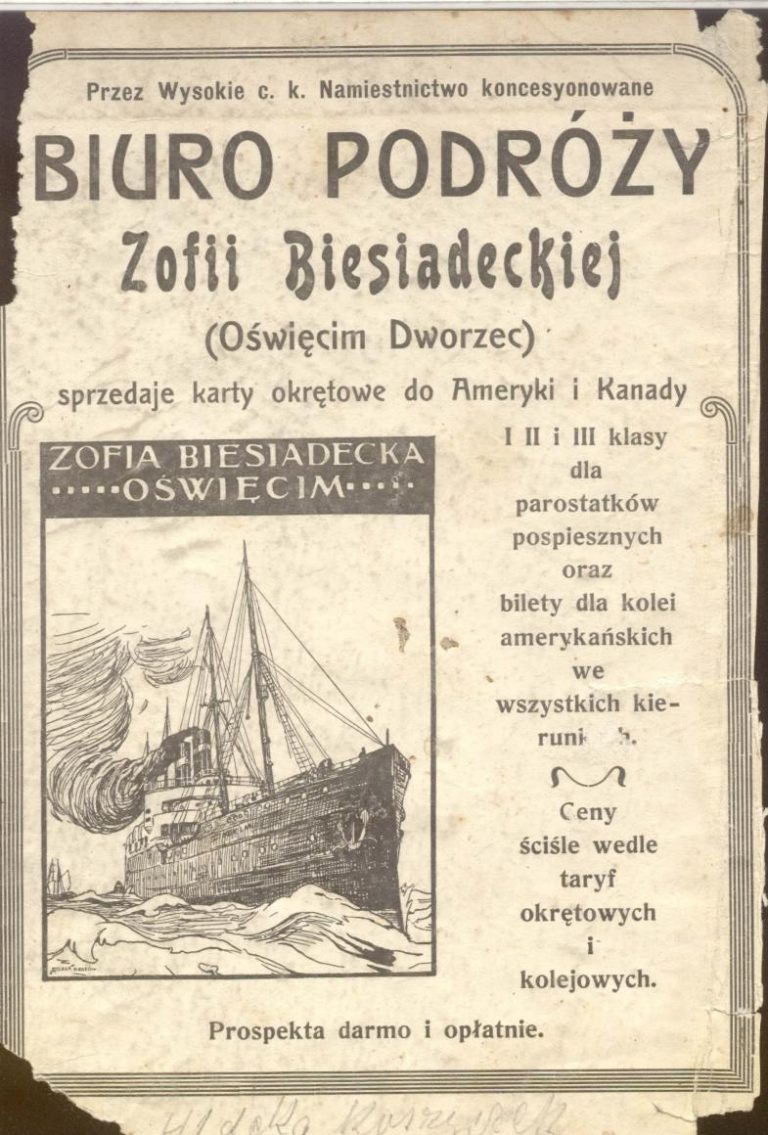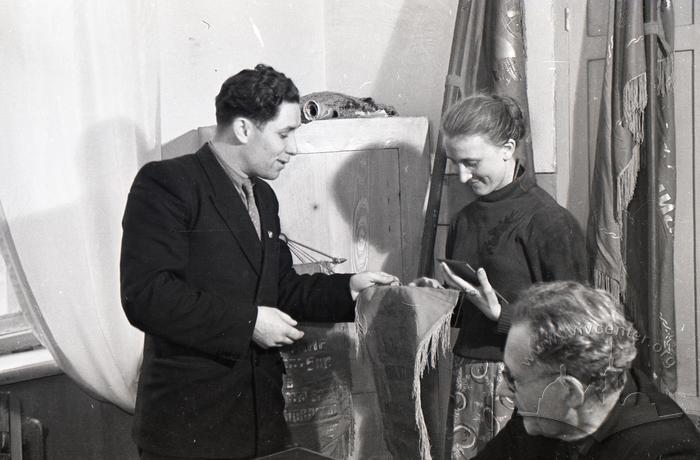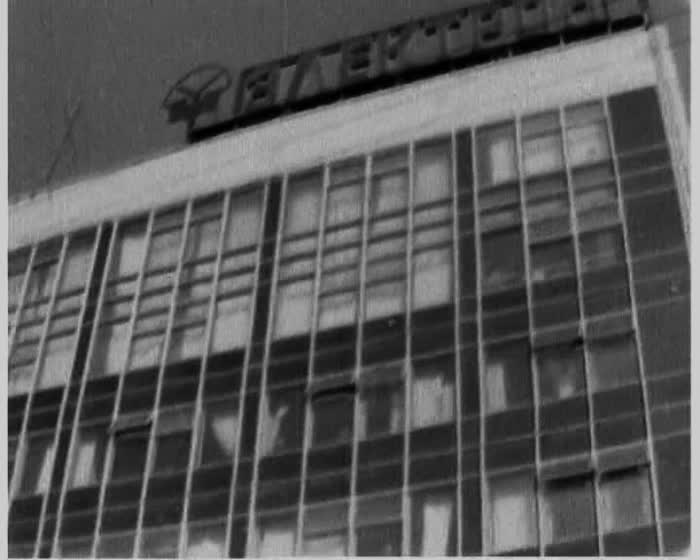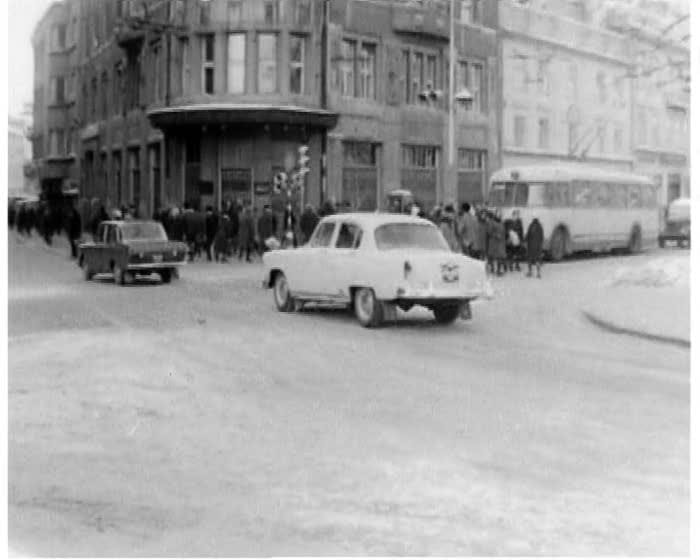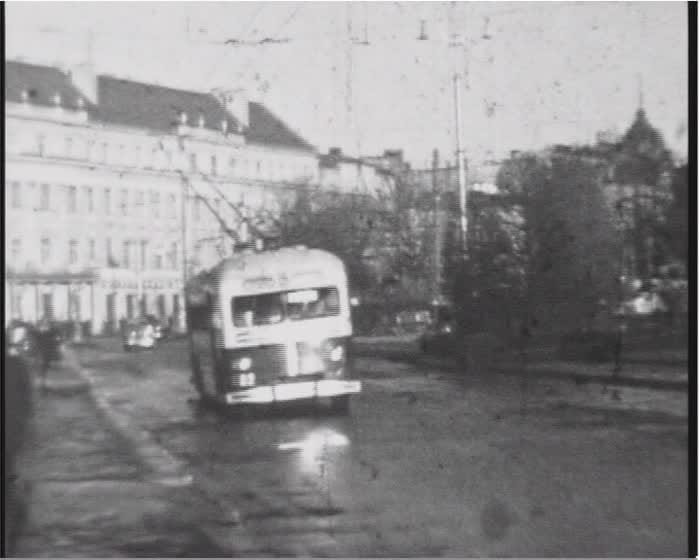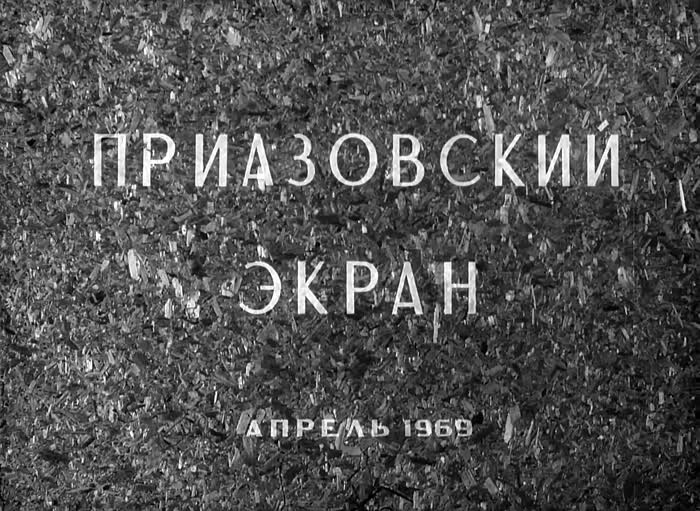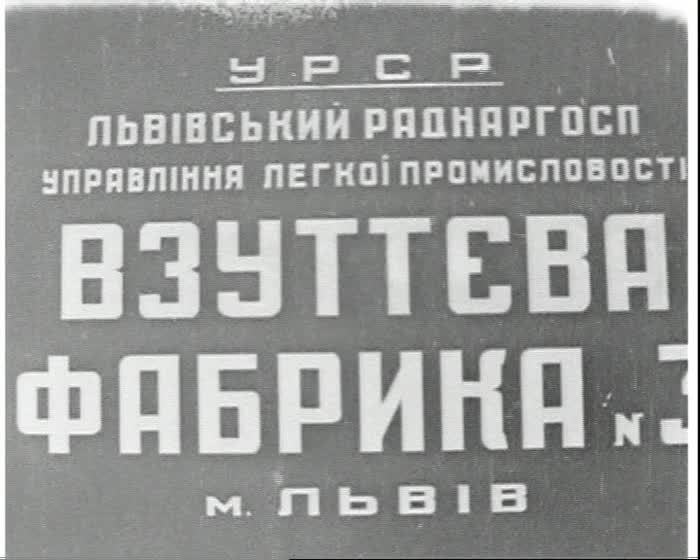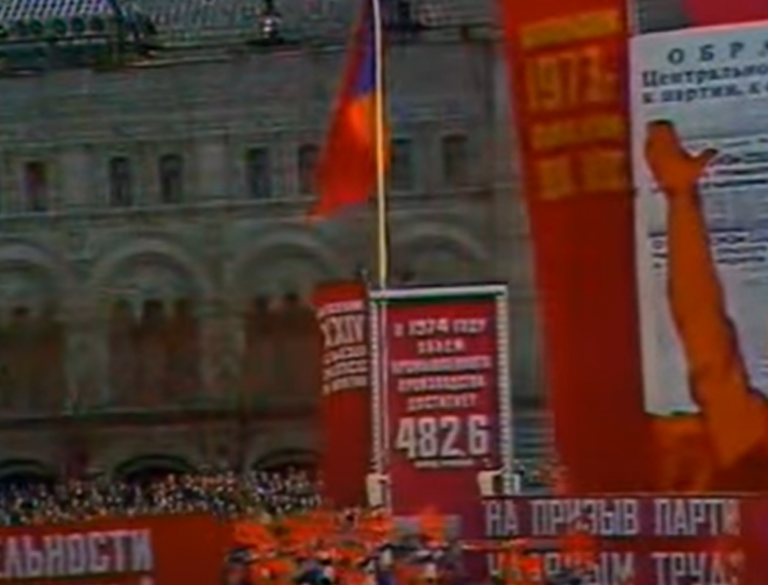Sources
Filter by themes:
Primary Sources

Rokhl Auerbach on Taras Shevchenko, 1936
The article "Memories of Taras Shevchenko" was published on April 26, 1936, in the weekly Opinia. This was a Jewish newspaper, ideologically close to Zionism, published in Polish from 1933 to 1939. The editorial staff of the weekly initially worked in Warsaw but, in 1936, due to censorship problems, was forced to move to Lviv. The author of the article was Rokhl Auerbakh, known primarily as one of the archivists of the Oyneg Shabes organization (in Hebrew, "Joy of Saturday"), which collected documents and testimonies on the initiative of historian Emanuel Ringelblum, and as the organizer of a kitchen in the Warsaw Ghetto. She devoted her entire post-war life to researching and honoring...

Growing Up in Skala: A Galician Shtetl Seen through a Teenager’s Eyes
The excerpts presented here are drawn from the memoirs of Fanya Gottesfeld, a Jewish girl from the Galician town of Skala, who survived the Holocaust. In her recollections, she revisits her youth, which unfolded in interwar Poland. Her account bears a distinctive quality: at the onset of the Holocaust, she was eighteen years old—old enough to perceive and record the events unfolding around her, yet still young enough for her reflections to remain free from the hardened frameworks of political dogma or inherited prejudice. Her memories can be interpreted through five overlapping contexts—cultural, economic, political (interethnic), and ethical. The following analysis engages with each of these dimensions to reconstruct the anthropological perspective of...

Leisure Time of Workers through the Eyes of a Soviet Dissident: Oleksa Tykhyi on Reading Practices
Oleksa Tykhyi (1927–1984) was a rural teacher who worked near the Donbas town of Druzhkivka. In 1956, he was sentenced to seven years in a Mordovian labour camp for criticising the Soviet invasion of Hungary. There, he took part in a rebellion against the prison administration and spent a year in solitary confinement. While in the camp, he met many dissidents, including Levko Lukiyanenko, with whom he became friends. After returning to Ukraine in 1964, Tykhyi was banned from intellectual work and forced to leave teaching, taking up manual labour instead — a common path for Soviet dissidents. Most of his journalistic articles were written during this period: “Reflections on the Ukrainian Language...

Diary of a Respectable Book Enthusiast from Druzhkivka, 1960
“I am a machine doomed to devour books.” —Karl Marx Arkadii Abramov began keeping his diary on 13 March 1960 with a rather ambitious declaration: “Today I began writing a diary-memoir, which I plan to submit to the oblast publishing house” (part of the diary has survived, ending on 4 June 1961, with an additional entry dated 18 May 1962 concerning Nikita Khrushchev’s de-Stalinisation policy.) It is difficult to say today why the author chose to begin with such a peculiar opening. His biography was not especially remarkable. Perhaps the young trade union activist of the militarised security team VOKHR No. 4 in the city of Druzhkivka (then Stalino Oblast of the Ukrainian...

Gender and Power: The Communist Party of Ukraine on Women in Leadership, 1960
The Resolution of the Secretariat of the Central Committee of the Communist Party of Ukraine (CPU) “On Serious Shortcomings in the Promotion of Women to Leadership Positions”, dated July 4, 1960, noted a significant gender imbalance in Soviet state administration. The CPU placed the blame for the insufficient presence of women in leadership on party committees and the heads of Soviet and economic governing bodies, who, it stated, “underestimate the full importance of this issue.” In the document, absolute and relative figures were presented together only when describing women’s educational level, whereas in all other cases, the share of women was given only in relative terms. Such manipulation of statistics made it impossible...
Show more
Collapse all
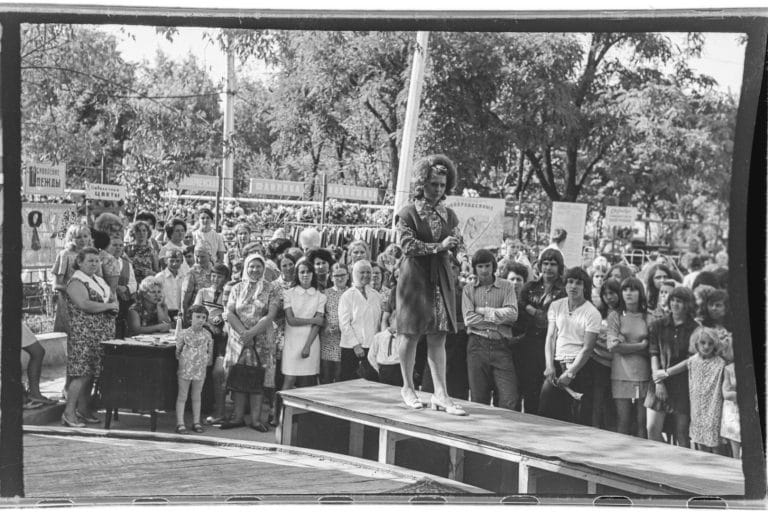
‘Fashion Show’ in late Soviet Pokrovsk, photo by Mykola Bilokon
This image, taken by Mayak photojournalist Mykola Bilokon, shows a woman on a catwalk demonstrating some of the clothing manufactured by ‘Rainbow’ sewing factory in Krasnoarmeisk (today’s Pokrovsk), in the Donetsk region. The woman is dressed in a floral print, dagger-collared, button-down dress and woollen, belted, armless cardigan and wears a contemporary backcombed hairstyle and makeup. An audience made up of different generations of Pokrovsk residents watches the show. Their clothing and hairstyles also demonstrate the changing fashions of the 1970s and 1980s. While some women in their 40s and 50s (born in Stalinist 1930s and 1940s) wear knee-length, possibly homemade, patterned floral dresses and headscarves, some younger members of the audience wear...
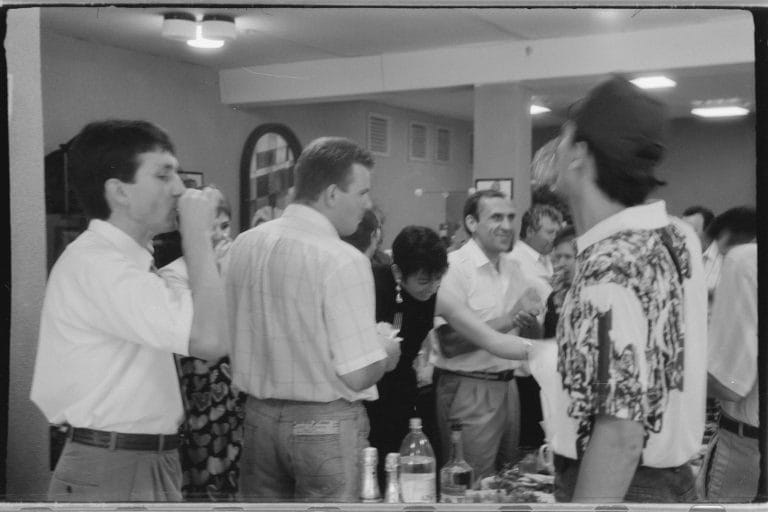
Privatization and Economic Transformation in the Post-Soviet Space: The Photo Archive of the Druzhkivka Newspaper Okno, 1990s
The photographs presented here from the archives of the newspaper Okno [literally “window” — tr.note] document the creative work of its editorial staff, who sought to critically reflect on the realities of Ukraine’s economic transformation in the 1990s through artistic and allegorical means. Founded in 1994 by local entrepreneurs, the newspaper positioned itself in opposition to the old communist nomenclature, which still retained control over local government bodies and capitalized on the widespread disappointment and confusion following the collapse of the Soviet Union. The founders of Okno were the insurance company ASKO-Donbas Pivnichny (established in 1991) and its affiliated printing company PrimaPress. The emergence of the paper ended the local authorities’ monopoly over...
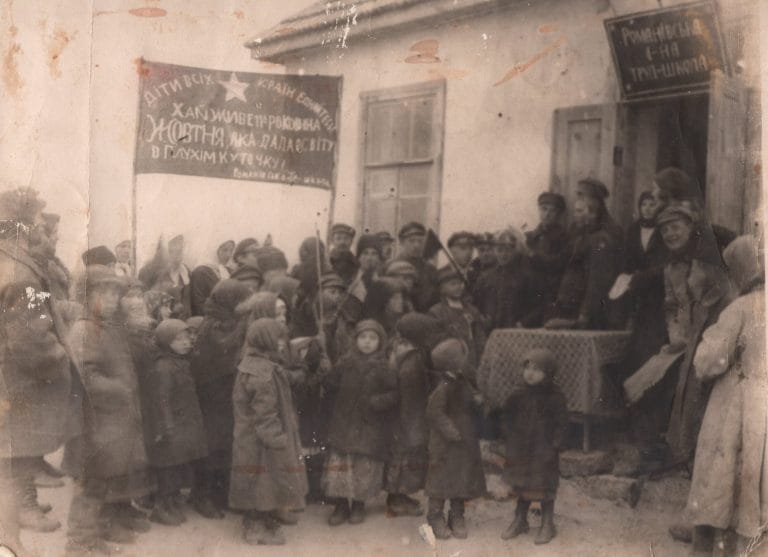
“Bringing Education to a Remote Corner”: A Competition Photograph by Marko Zalizniak, 1929
Marko Zalizniak (1893–1982) was a rural amateur photographer best known for his images from the front lines of World War I and for documenting collectivization in the villages of what is now the Pokrovskyi District of Donetsk Oblast, Ukraine. The opening of a primary school in his home in the Romanivskyi khutir in 1927 can be seen as a prologue to his 1929 competition photograph, which will be discussed below. The following year, the residents of the khutir decided to construct a separate school building at their own expense. The new school opened in 1928, timed to coincide with the 11th anniversary of the October Revolution. Soon afterward, the Soviet authorities took the...
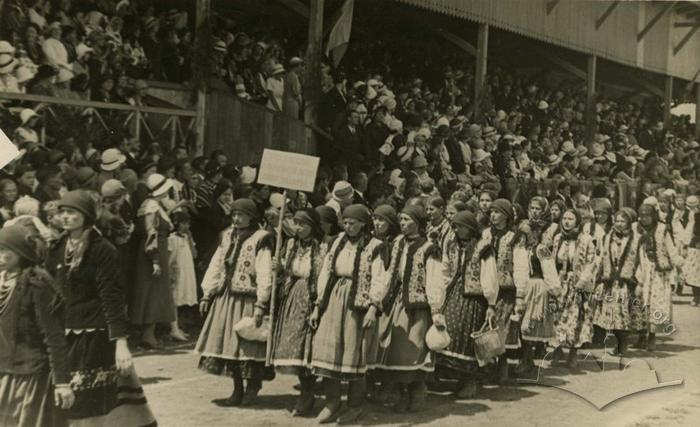
Celebration at the Stadium of the Ukrainian Sokil-Batko, Lviv, 1934
The event captured in the image takes place at the stadium of the Ukrainian Sokil-Batko, likely during the third and final Regional Sokil gathering in 1934. The first Ukrainian gymnastic society, Sokil (Sokil-Batko [Father Falcon]) was founded in Lviv on February 11, 1894. The model was the charter of the Czech Sokol (1862, founded by Miroslav Tyrš). The goal of the society was fostering national unity, strength, and dignity among Ukrainians while also promoting endurance, agility, entrepreneurship, and discipline. Beyond gymnastics, Sokil placed significant emphasis on firefighting and tourism. The society’s first chairman, serving until 1900, was the renowned architectural engineer Vasyl Nahirnyi. By 1900, Sokil had expanded its activities across Galicia, leading...
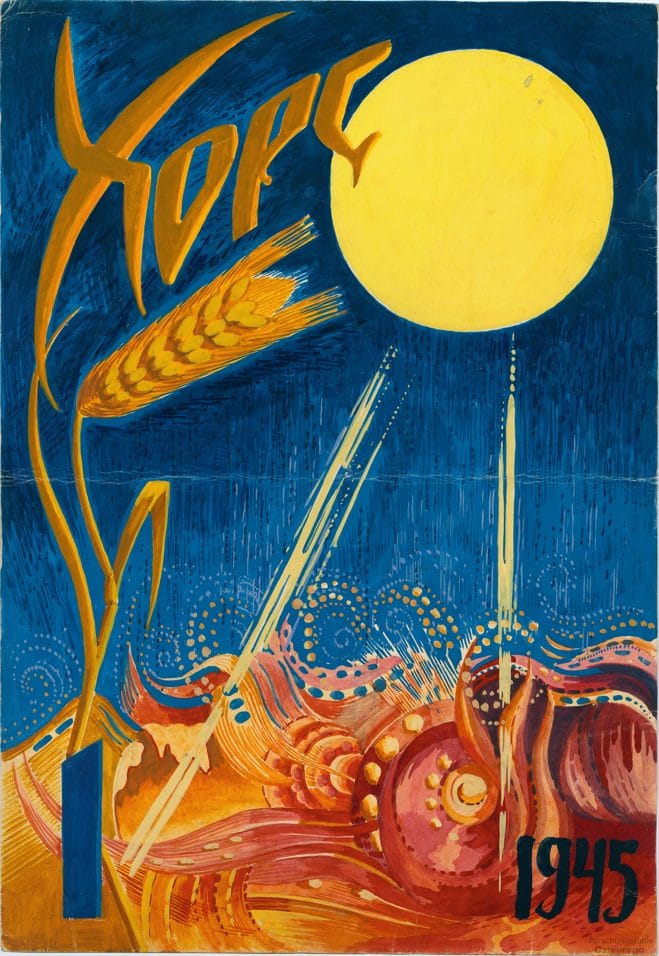
Title Pages of Never Published Editions of the DP Journal KHORS, 1945-1951
The idea of the Ukrainian DP-creation KHORS as a movement and a journal was kept alive for many years, even though the journal’s publication, initially planned as a quarterly, could never be realized beyond a first edition in 1946. The title pages listed here were never published, but they can provide interesting insights into the senses put into KHORS by its creators, its design, and the materials used. In 1945, immediately after the war, Ukrainian artist Halyna Mazepa drew the first cover with simple paint on a piece of cardboard. Its design was intended to reveal the idea of the future edition. The journal’s title is written in wheat, an important symbol in...
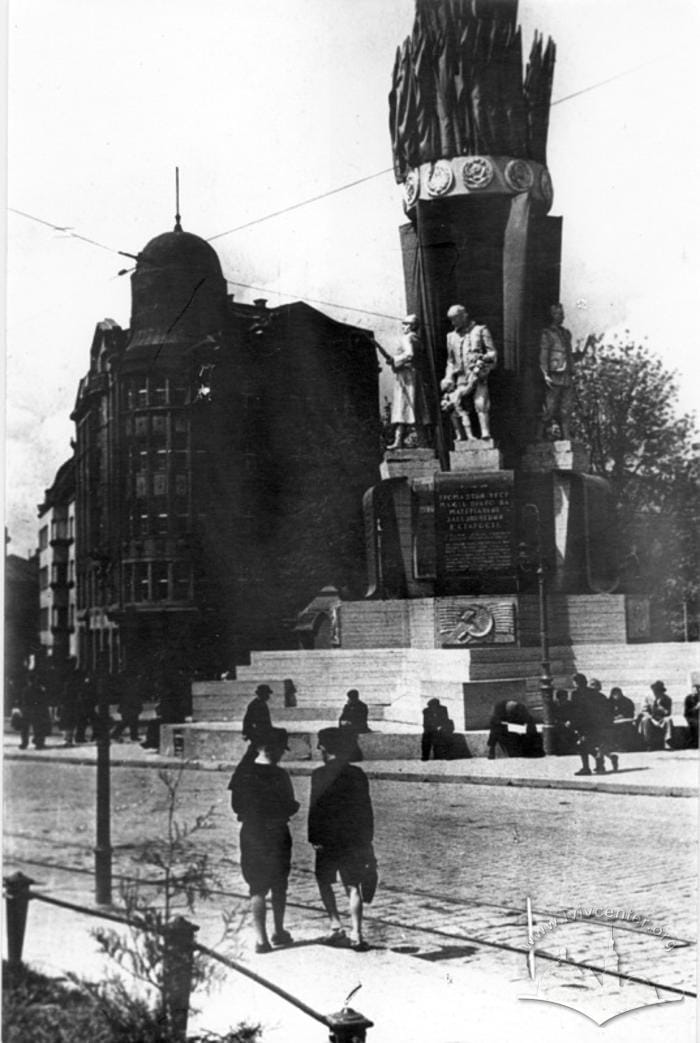
View on the Monument to the Soviet Constitution, Lviv 1940
The monument to the Soviet constitution, or the Stalin Constitution, was built in Lviv in October 1939. The authors were the sculptor Serhyi Lytvynenko and Kyiv artist Mykhailo Dmytrenko, it’s possible that, the artists adapted the project, originally conceived in Moscow, to the new city conditions. The sculptors Yevhen Dzyndra and Andryi Koverko carried out the project, but the participation of Lytvynenko’s student the young sculptor Yakiv Chaika is also a possibility. The monument was made in the ceramic-sculpture factory, which opened on Muchna St. in 1939. The location for the monument was chosen in the city centre, the “island” on the boundary mark of the Hetman embankments, between Yahellon’ska st. and Holy...
Show more
Collapse all
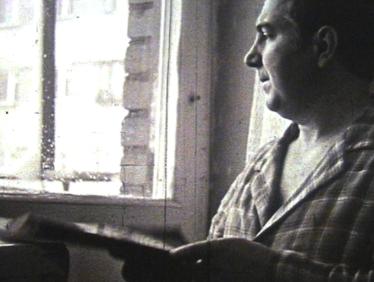
Amateur Media and Life in Cheryomushky
In addition to the official media (ekklesia)—the imagined narratives and myths presented through theatrical performances, films, and other sanctioned representations consumed by Soviet citizens in the agora (for instance, in cinemas as part of the public sphere, or via television as a window onto it)—there also existed a private sphere (oikos). But how can we uncover what everyday life was like for ordinary people? One valuable source for accessing this lived reality is amateur film recordings, which captured fragments of daily life in cheryomushky and khrushchovkas. The Soviet Union maintained a unique ideological system that simultaneously restricted and encouraged amateur media. The state promoted amateur filmmaking through official clubs—such as those...
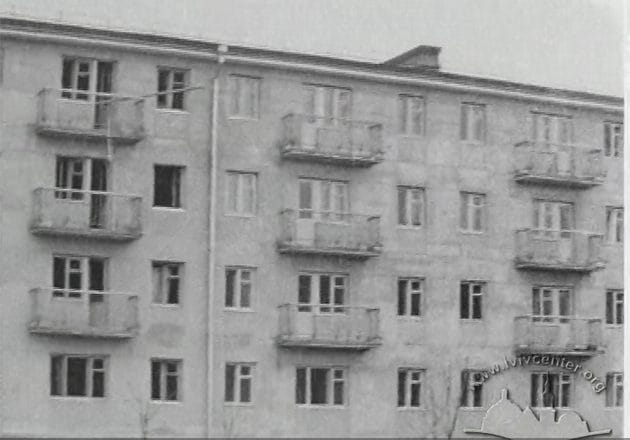
TV News from a Lviv Television Studio in the 1960s
The task of popularizing the Soviet government’s approach to solving the “housing issue” in the Ukrainian SSR was entrusted not only to trade unions and their media—such as construction or architectural magazines—or to artists working in theater and cinema, but also to television. A television studio in Lviv was established in 1955, and by 1957 it was already actively producing local news. These broadcasts typically featured several short stories, each lasting from one to three minutes, focused on the region’s economic and cultural development. When not aired live—live broadcasts being made possible through the use of a mobile television station—the news segments were filmed on 16 mm film by traveling television crews. The...
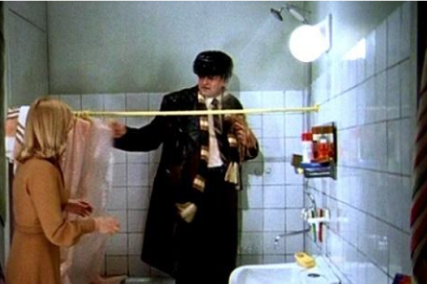
The Irony of Fate, or Enjoy Your Bath!, a 1975 Soviet Film
In 1969, Soviet playwrights Emil Braginskiy and Eldar Riazanov wrote the play Enjoy Your Bath! Or Once Upon a Time on New Year’s Eve, which quickly became a favorite in Soviet theaters. In the early 1970s, the decision was made to adapt it for television, leading to the premiere of the two-part TV movie during the New Year’s holidays of 1975–1976. Much like the 1959 Moscow operetta about the Cheryomushki neighborhood, a popular theatrical plot was reimagined in a new medium—this time, not through cinema but television. Unlike the 1963 film musical Cheryomushki, the adaptation took the form of a television movie enriched with numerous musical interludes, which became widely popular after its...
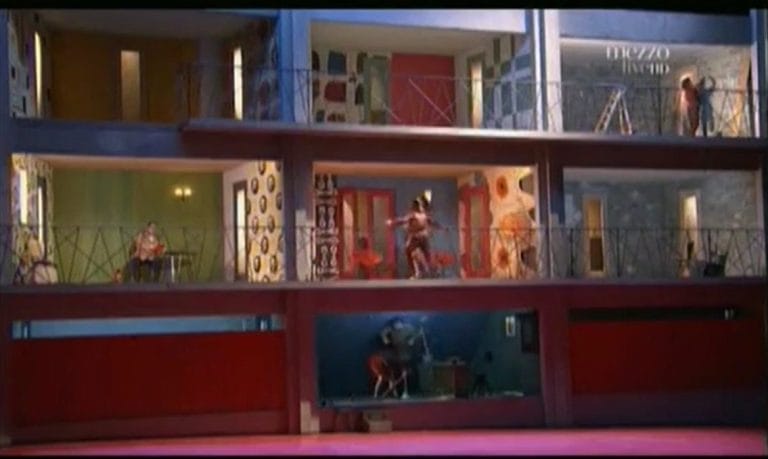
Moscow, Cheryomushki, a 1959 Soviet Operetta
On December 24, 1958, the premiere of the three-act operetta Moscow, Cheryomushki took place at the Moscow Operetta Theatre. The music was composed by the renowned Soviet composer Dmitri Shostakovich, and the production was widely referred to in the media as the “Shostakovich operetta.” The official opening followed on February 24, 1959, and the work was met with favorable responses from both audiences and critics. The libretto was written by prominent Soviet playwrights and screenwriters Vladimir Mass and Mikhail Chervinsky. The stage production was directed by Vladimir Kandelaki and Leon Zaks, with Grigori Stoliarov as conductor, Georgi Kigel as set designer, and Halyna Shakhovska as choreographer. Two years after the premiere, Shostakovich’s friend,...
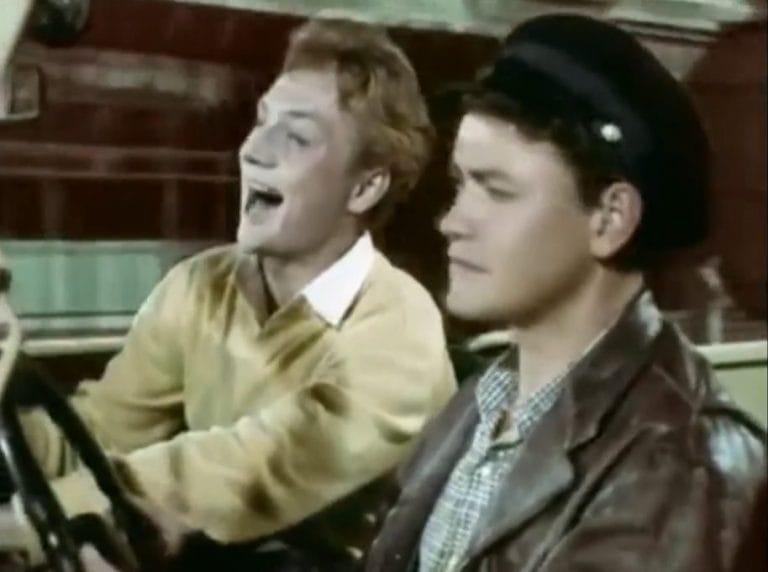
Cheryomushki, a 1963 Soviet Film
In 1961, the USSR’s cinematic authorities approved the idea of adapting the operetta Moscow, Cheryomushki into a film, and the search for a director began. The creators wanted someone with a musical background, so they turned to Herbert Rappaport, a professional musician. Rappaport had gained experience in musical cinema through his participation in Grigori Kozintsev’s Don Quixote (1957, Lenfilm), a renowned Soviet film that received international awards. Interestingly, Rappaport—an ardent admirer of the Austrian composer Gustav Mahler—enjoyed the music of the operetta. His idea to adapt the play into a film received support from Nikolai Rabinovich, professor at the Leningrad Conservatory and chief conductor of the local symphony orchestra, who became the conductor...
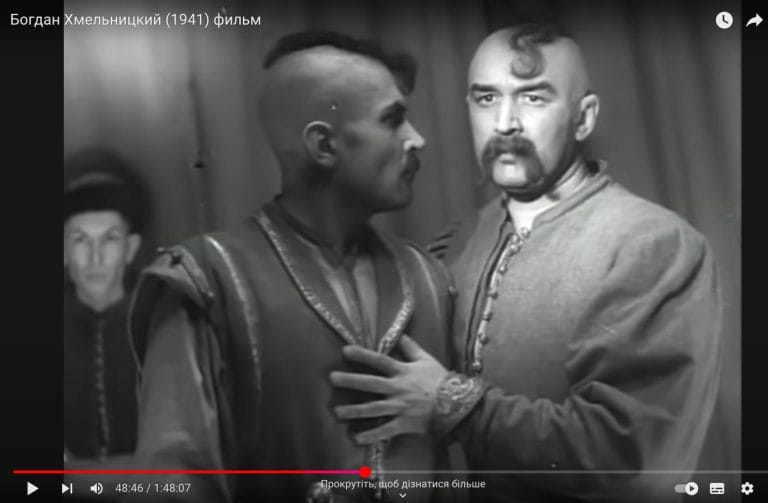
Bohdan Khmelnytskyi, a 1941 Soviet Propaganda Film
“Bohdan Khmelnytskyi” is a 1941 Ukrainian Soviet historical propaganda film directed by Ihor Savchenko. It is about the life of Bohdan Khmelnytskyi, the hetman of the Zaporozhian Cossacks, and the first years of Cossacks liberation war against the Polish nobility led by him. This film was shot at the Kyiv Film Studio (now the Oleksandr Dovzhenko National Film Studio). Its script was based on the 1939 play of the same name by the Ukrainian Soviet playwright and publicist Oleksandr Korniychuk.
Show more
Collapse all

Song about deportation to Siberia
At first glance, one might think this is a folk song about the end of deportations to Siberia. However, it is in fact an original composition, created by a local resident of Zastavna well known in the area — the folklorist Maria Havryliuk. Interestingly, the song was not based on Havryliuk’s own deportation experience but rather on stories she heard from a neighbor who had been forcibly sent to Siberia in the 1940s and 1950s. The way this song came into being reflects a common pattern in which experiences and events significant to an entire community are prompted to be voiced, interpreted, and endowed with meaning by that community. Consequently, such narratives are...

Roman Buchko on Soviet Film Amateurs: Excerpt from an Interview on November 1, 2012
Comment will follow...

“Oh, in the meadow blooms the red viburnum,” a Ukrainian resistance song
This source is an audio recording of the folk version of the one of the most popular Ukrainian resistance songs. It is known by various titles: “The rifleman’s Anthem,” [Cтрілецький гімн] “The song of the viburnum,” [Пісня про калину] or “Oh, in the meadow blooms the red viburnum” [Ой у лузі червона калина]. The song’s worldwide spread was facilitated by the performance of Andriy Khlyvnyuk, the lead singer of the Boombox band, who on February 28, 2022, the fourth day of Russia’s full-scale attack on Ukraine, sang only the first stanza of the song. His performance on St. Sophia Square in Kyiv led to the emergence of remixes. Among the many performers are...

Legend about the “disguised emperor” during the First World War
This source is the audio recording of the legend about the events of the First World War. The storyline describes an “emperor” who was incognito inspecting his army and its provisions. The prototype for the protagonist is Franz Josef I (1830–1916), the emperor of the Austrian Hungarian Empire. This artistic image shows the elements of naive monarchism. The type of “just and kind” ruler is based on his favorable attitude to Galician Ukrainians, who he took as loyal to the Habsburgs. This social myth about the “loyal troops” consisting of Ukrainians was reflected in the prose but also in songs from the late 19th and early 20th centuries. Our emperor is getting old...

Grine kuzine (Green Cousin), song about emigration, 1921
The song, with a debatable authorship, was written for a Jewish theater. It was performed both in Europe and in the United States, and it became one of the most popular migrant works. The word “green” was an ironic definition of new immigrants who did not navigate well in American reality. The song “Green Cousin” raises the issue of disappointment of migrants in America, where hard work exhausts new-comers and does not bring the expected profit. The “Columbian state” appears not as a dream country where dreams come true, but a society of inequalities. Despite the hilarious music and satirical plot, the song shows the anxiety of emigrants due to the lack of...

A brivele der mamen (A Little Letter to Mama), song about emigration, 1907
The song was written by a Belarusian composer and singer, Solomon Smulewitz (1868-1943) in 1907. The author also had experience of migration to the United States. The song became very popular. In particular, it was used as a basis for a theatrical production and a film in Yiddish. The work raises the issue of migration caused separation of families. While the son who went to America has a successful life and a new family, his mother feels abandoned. Before her death, she asks her son not to forget to read Kaddish, a memorial prayer for her. The problem of separated families remained common to all migrants, but in this text the Jewish prayer...
Show more
Collapse all


